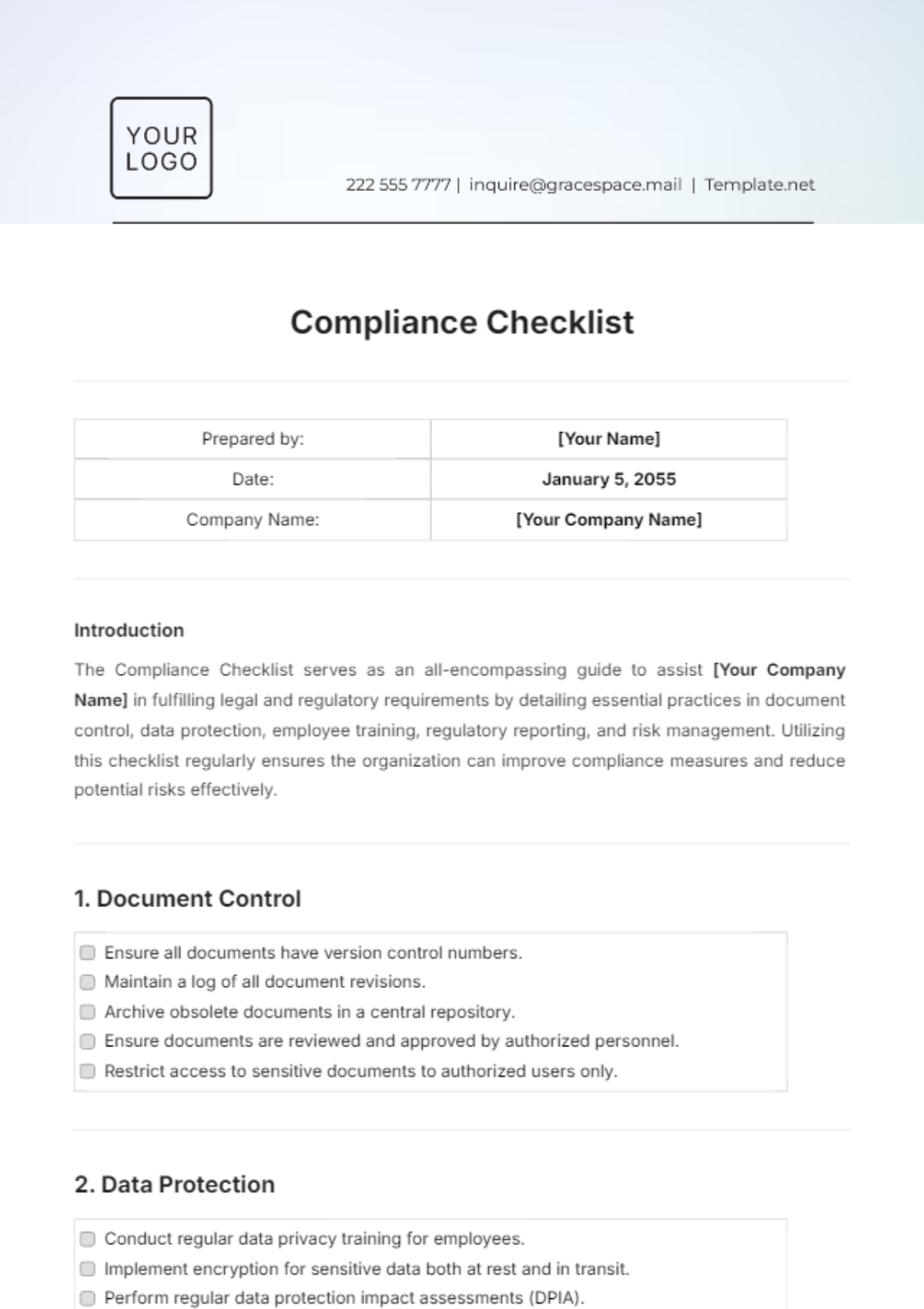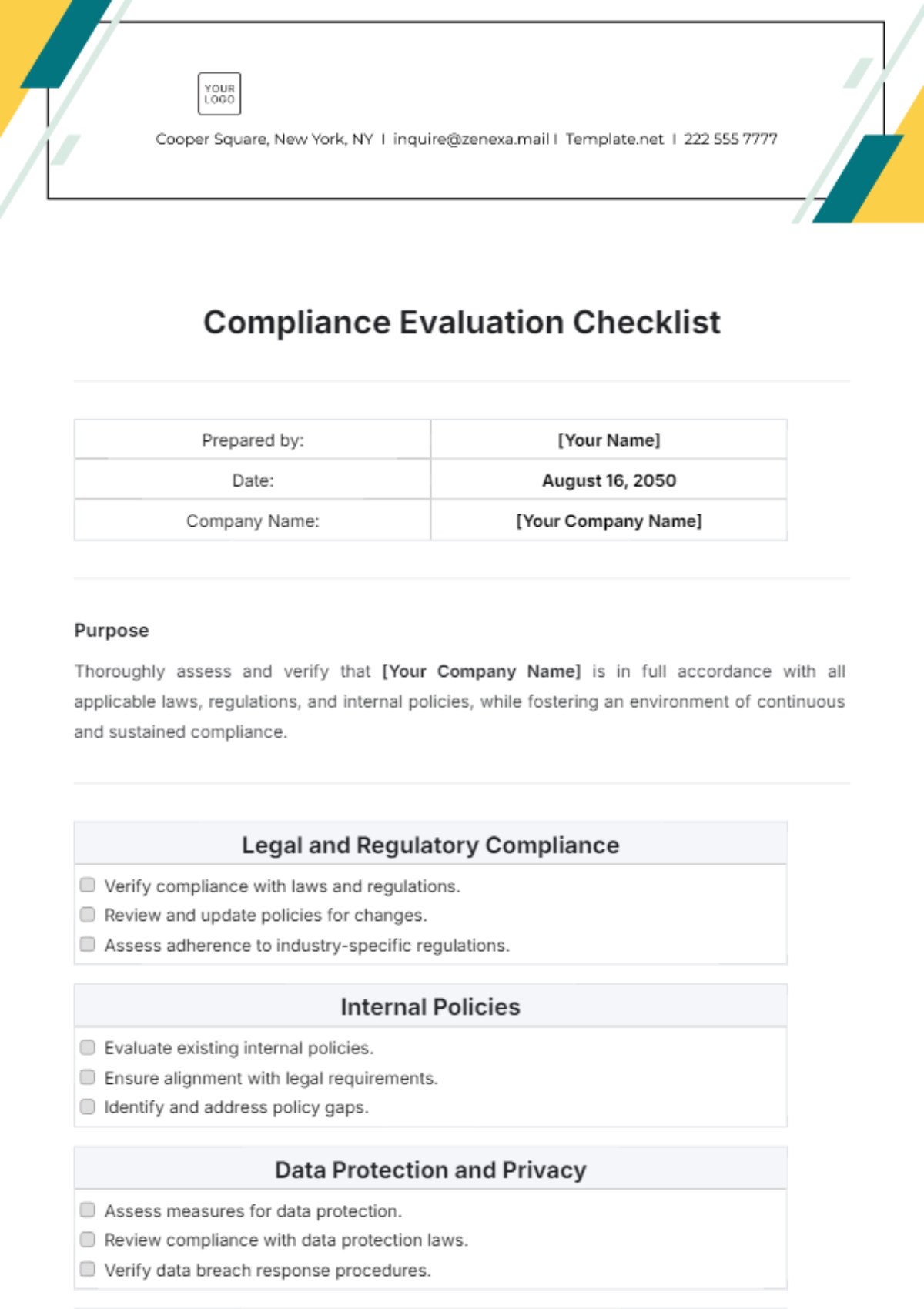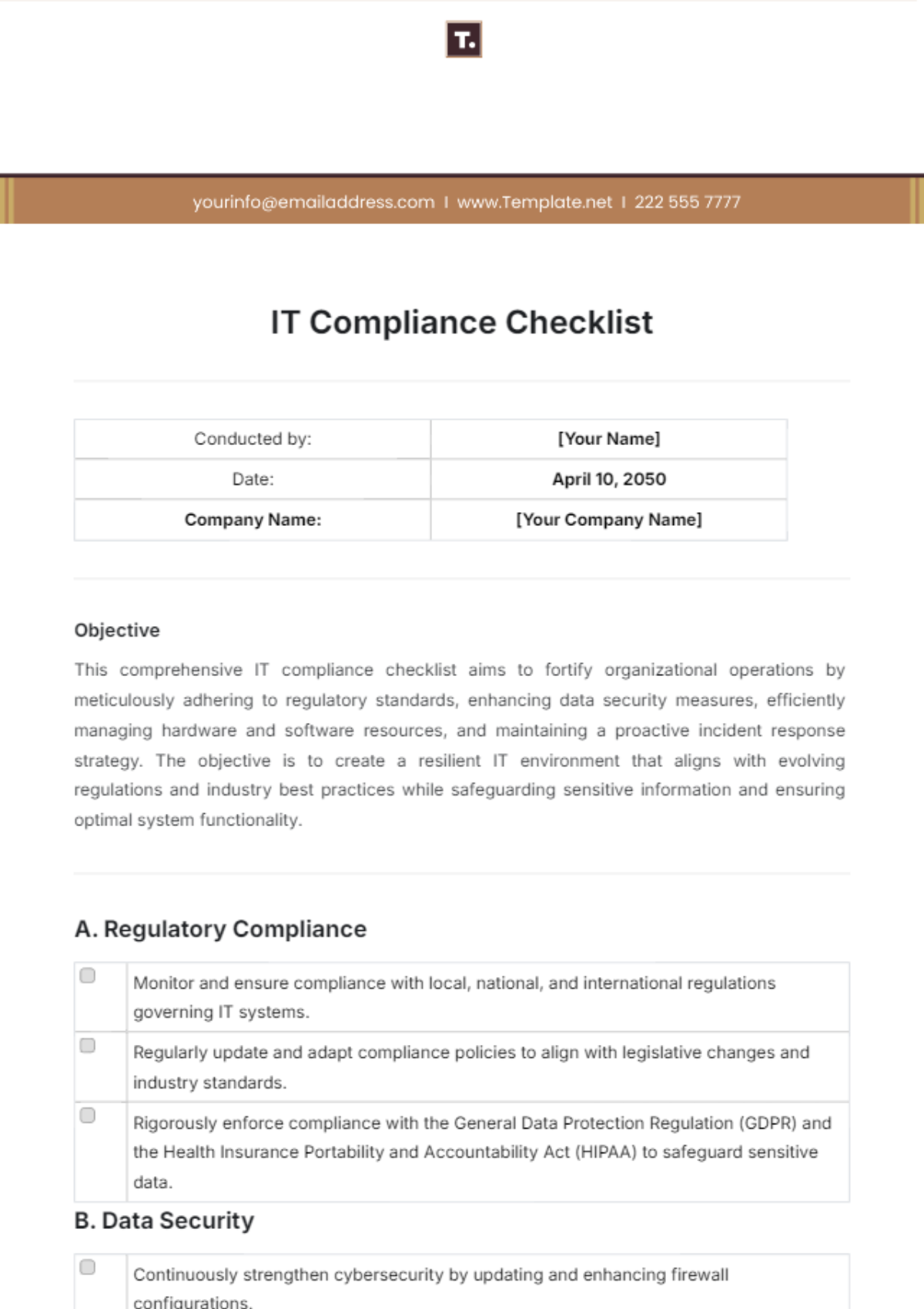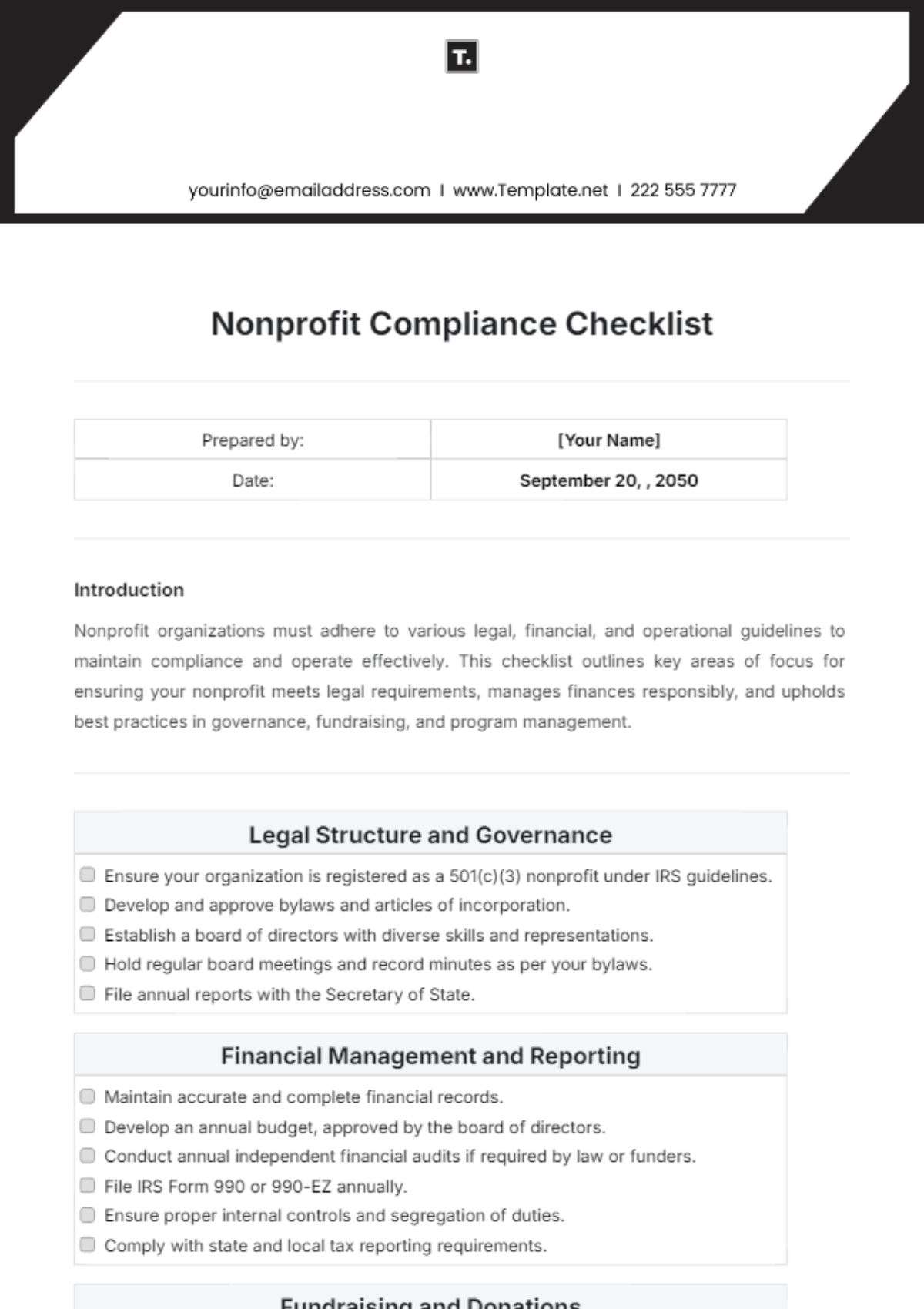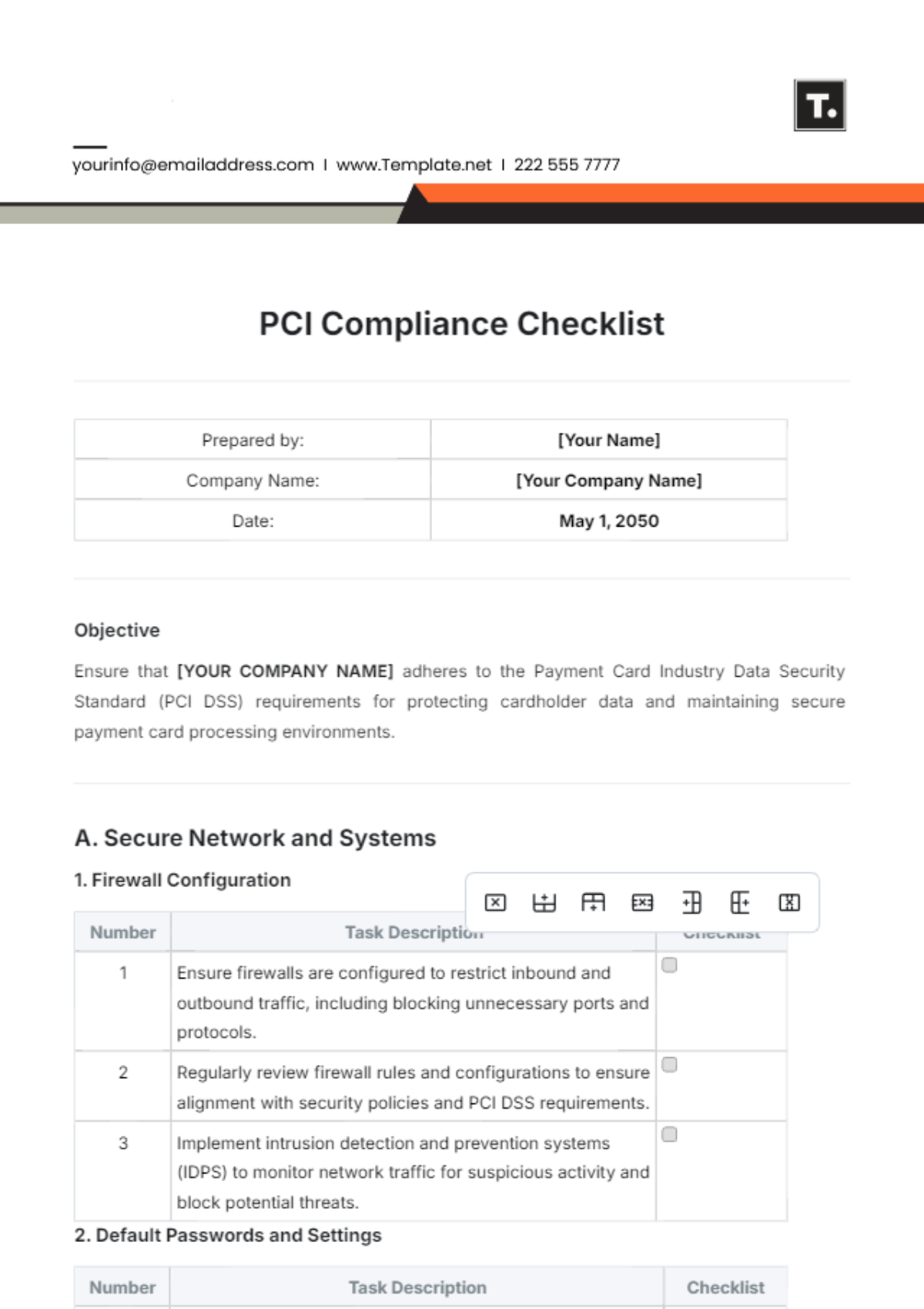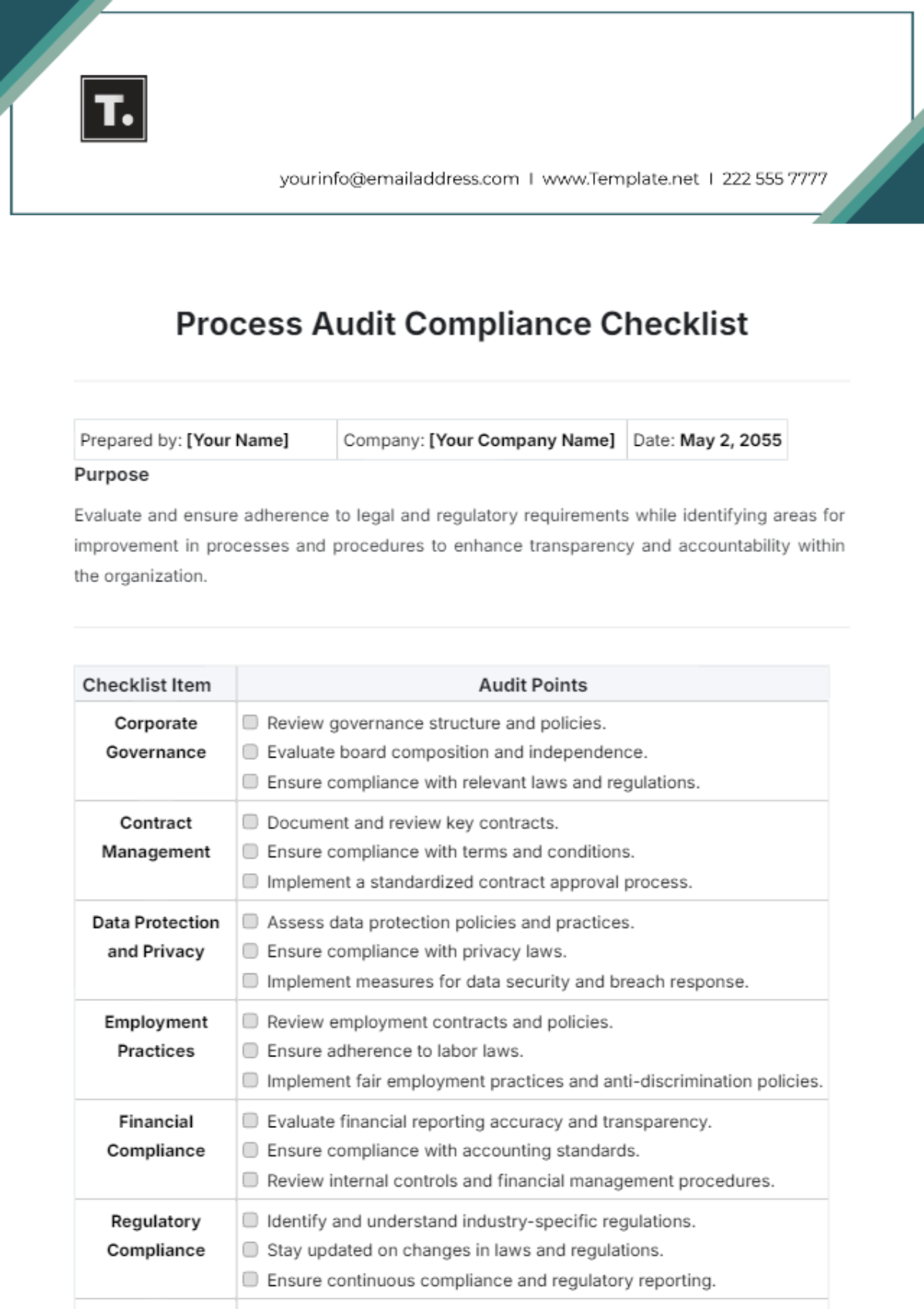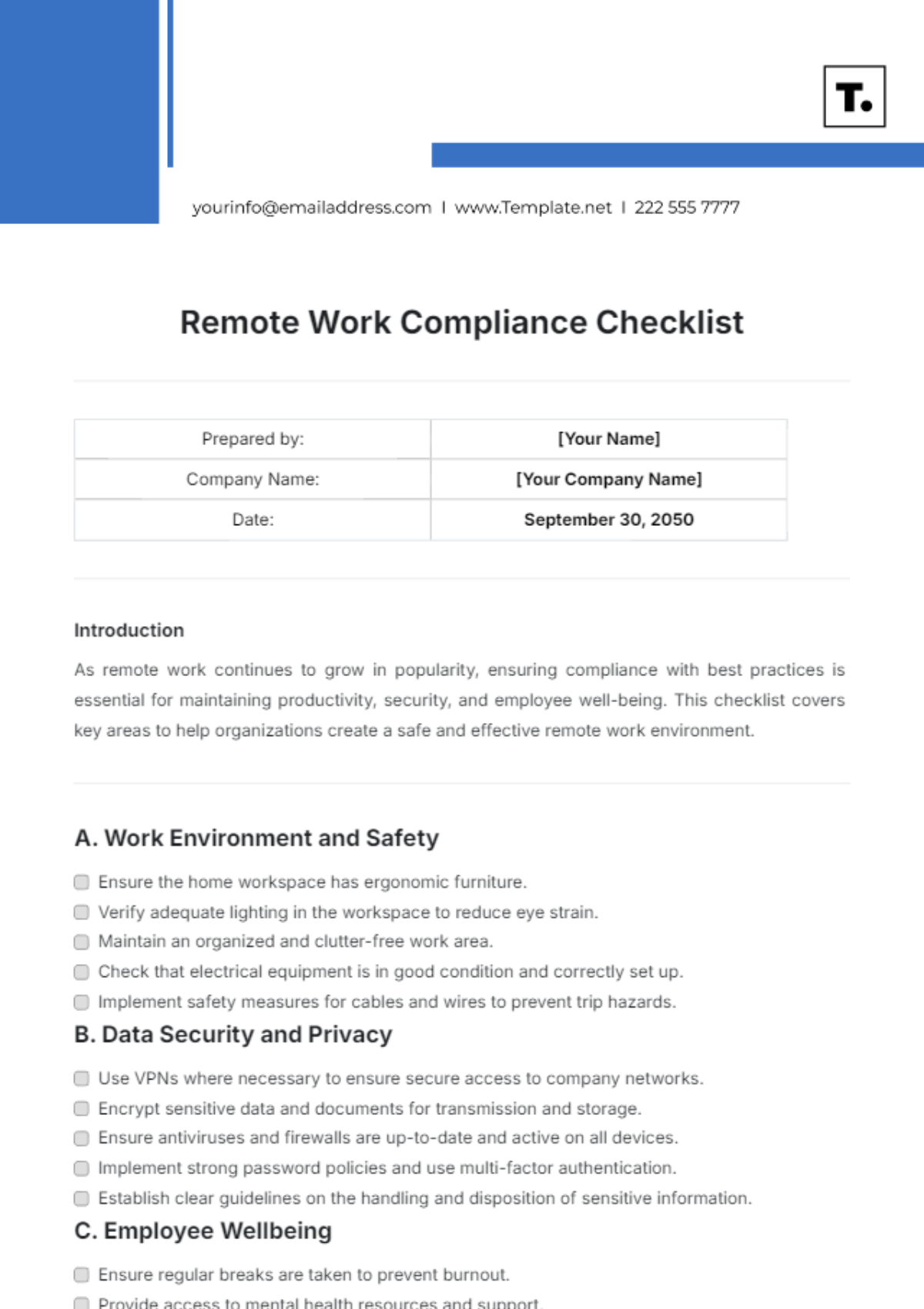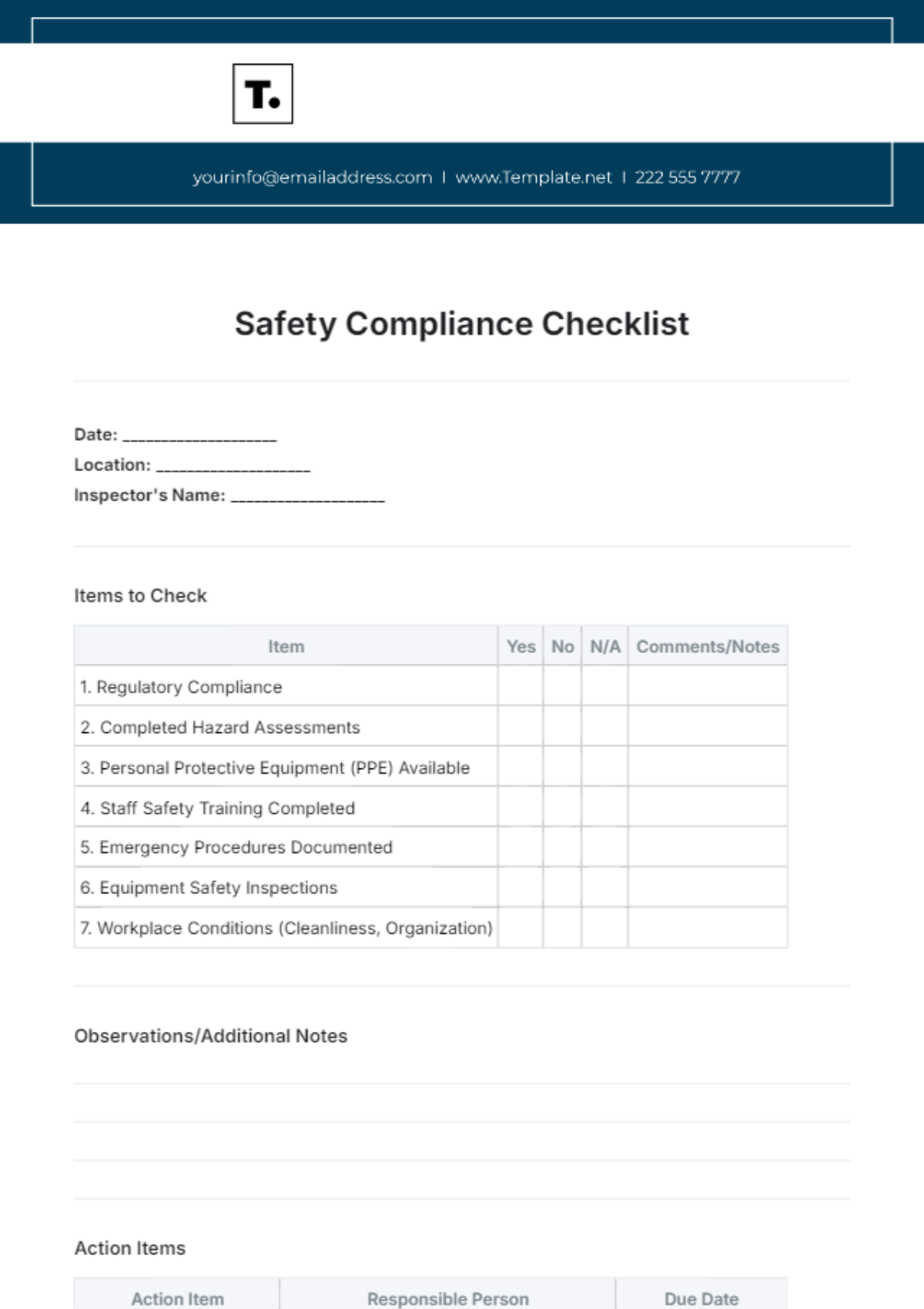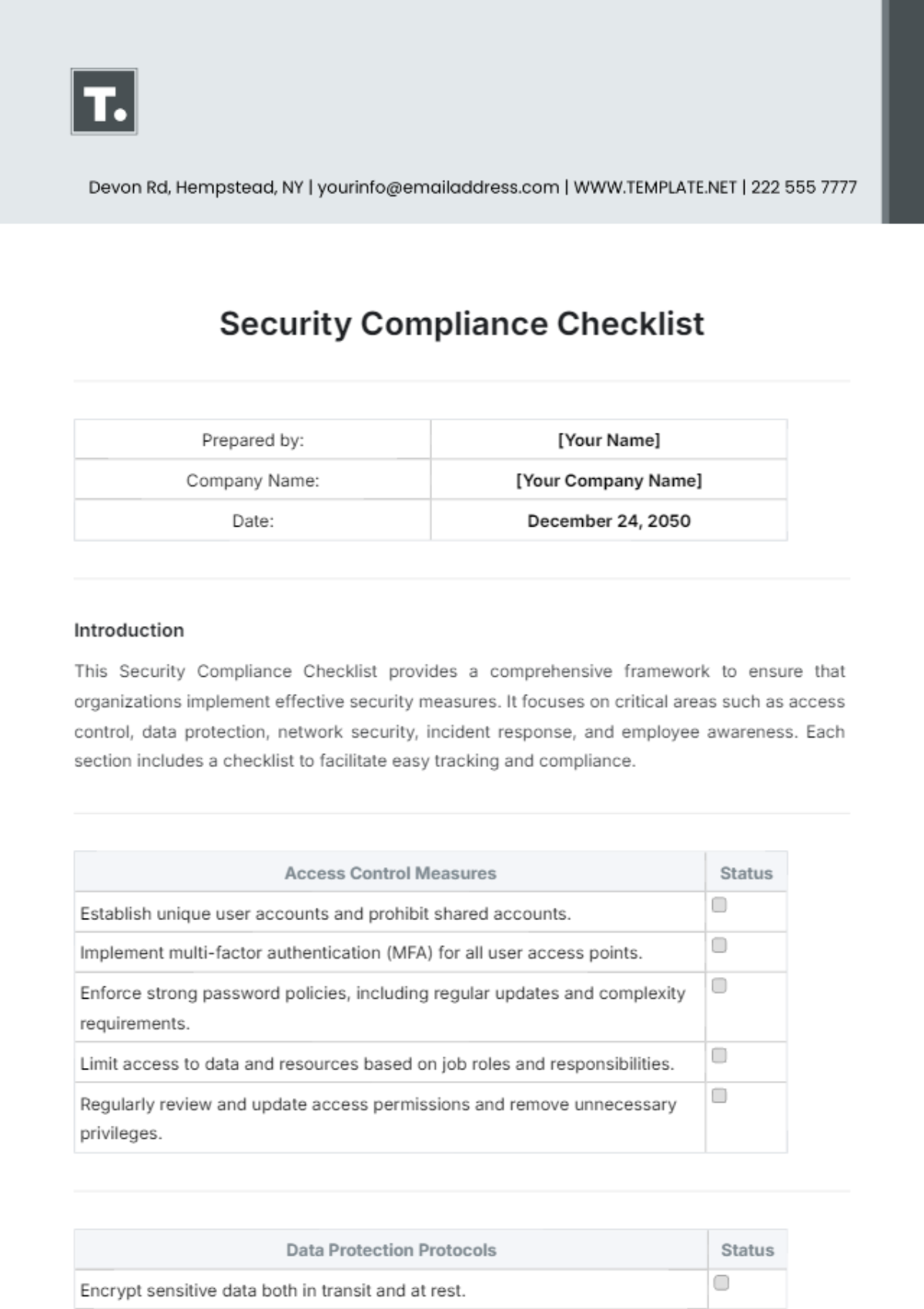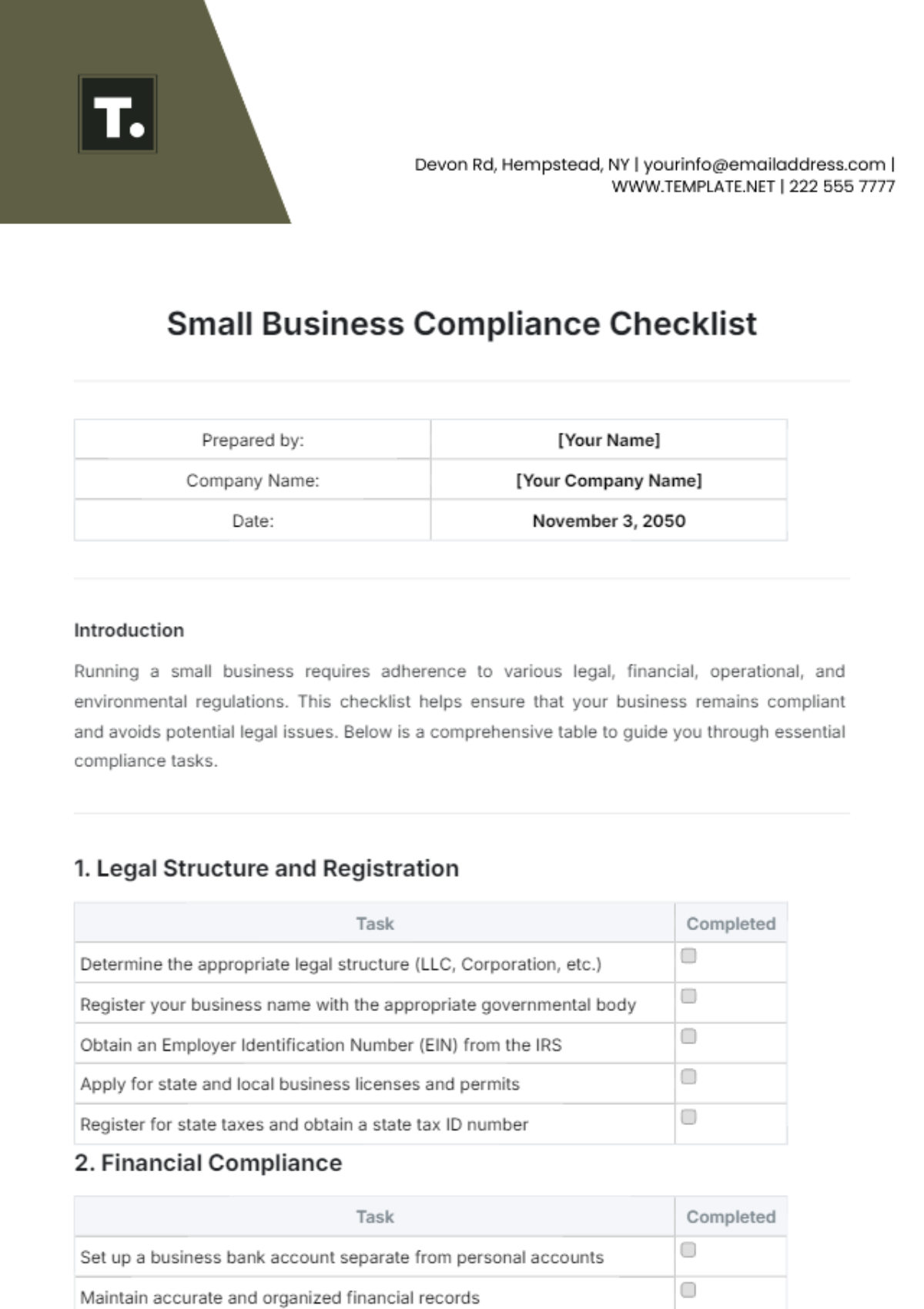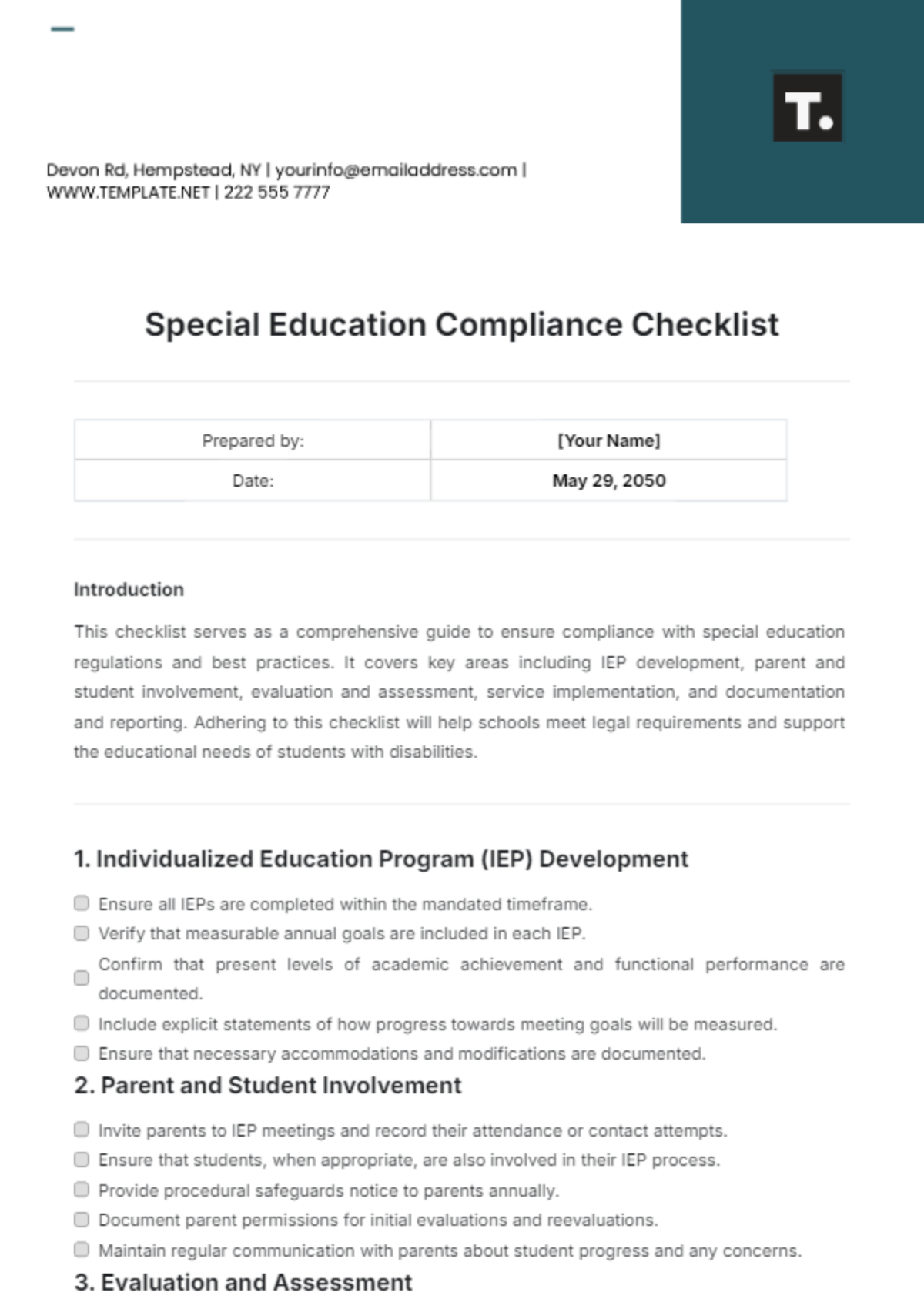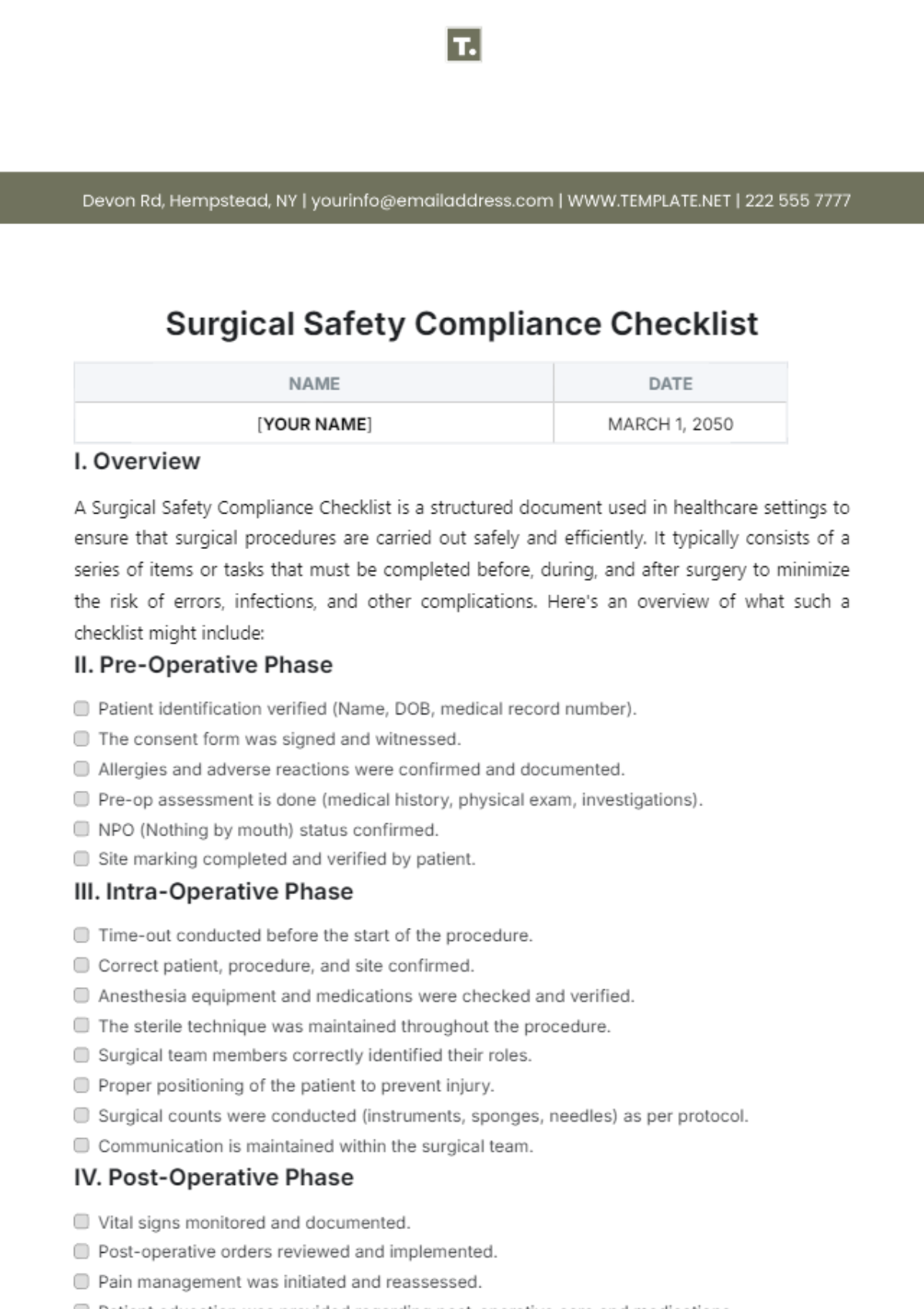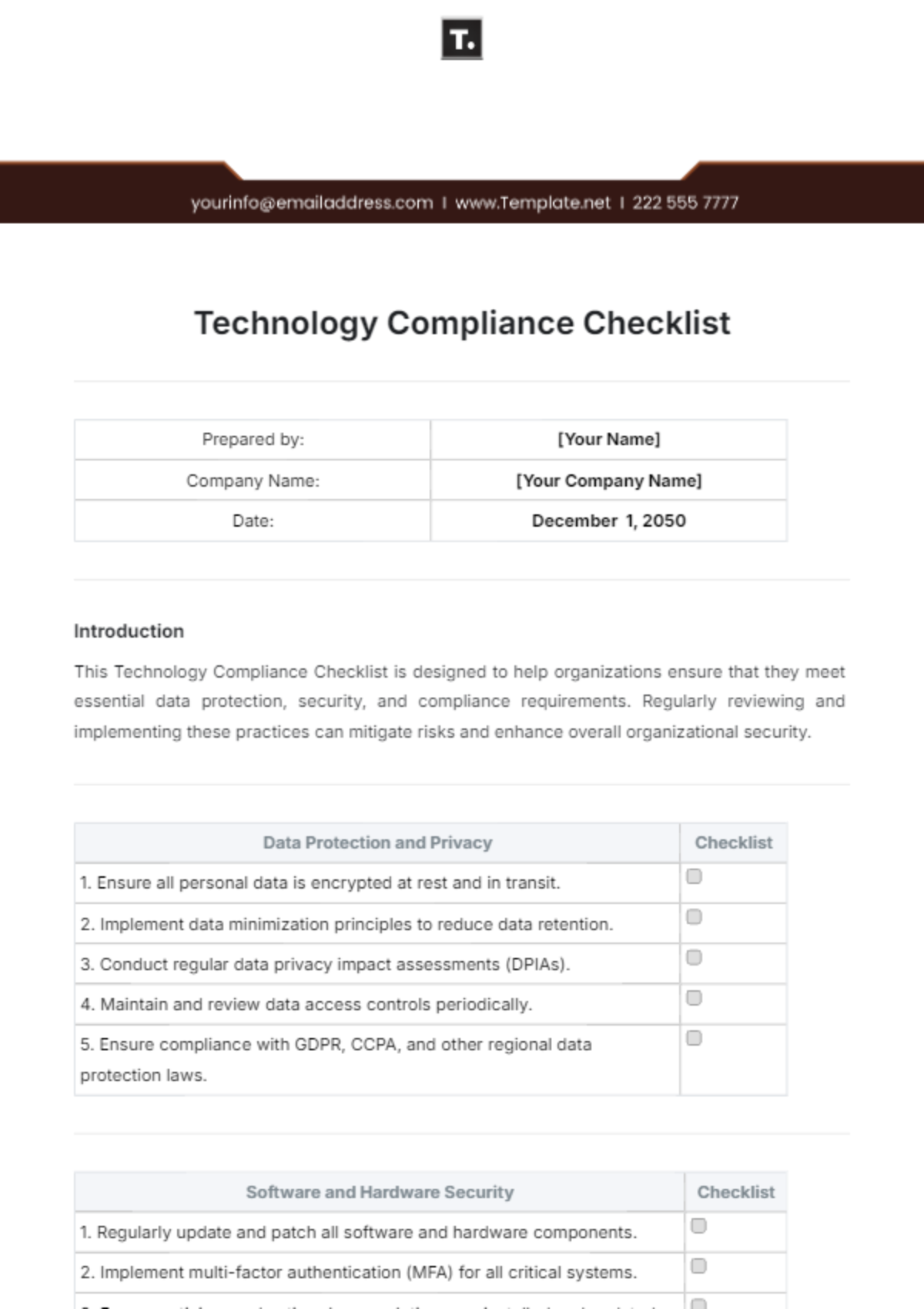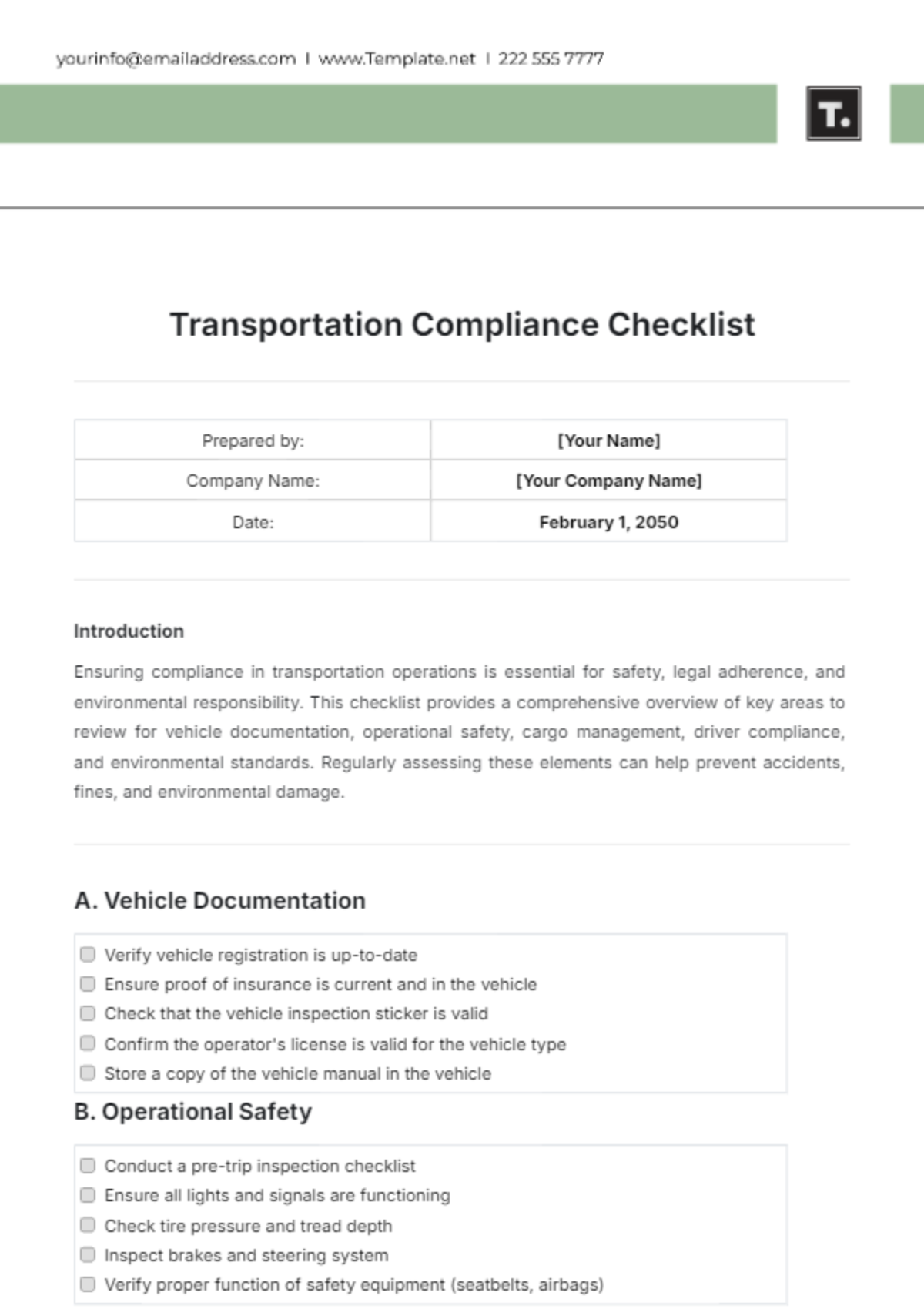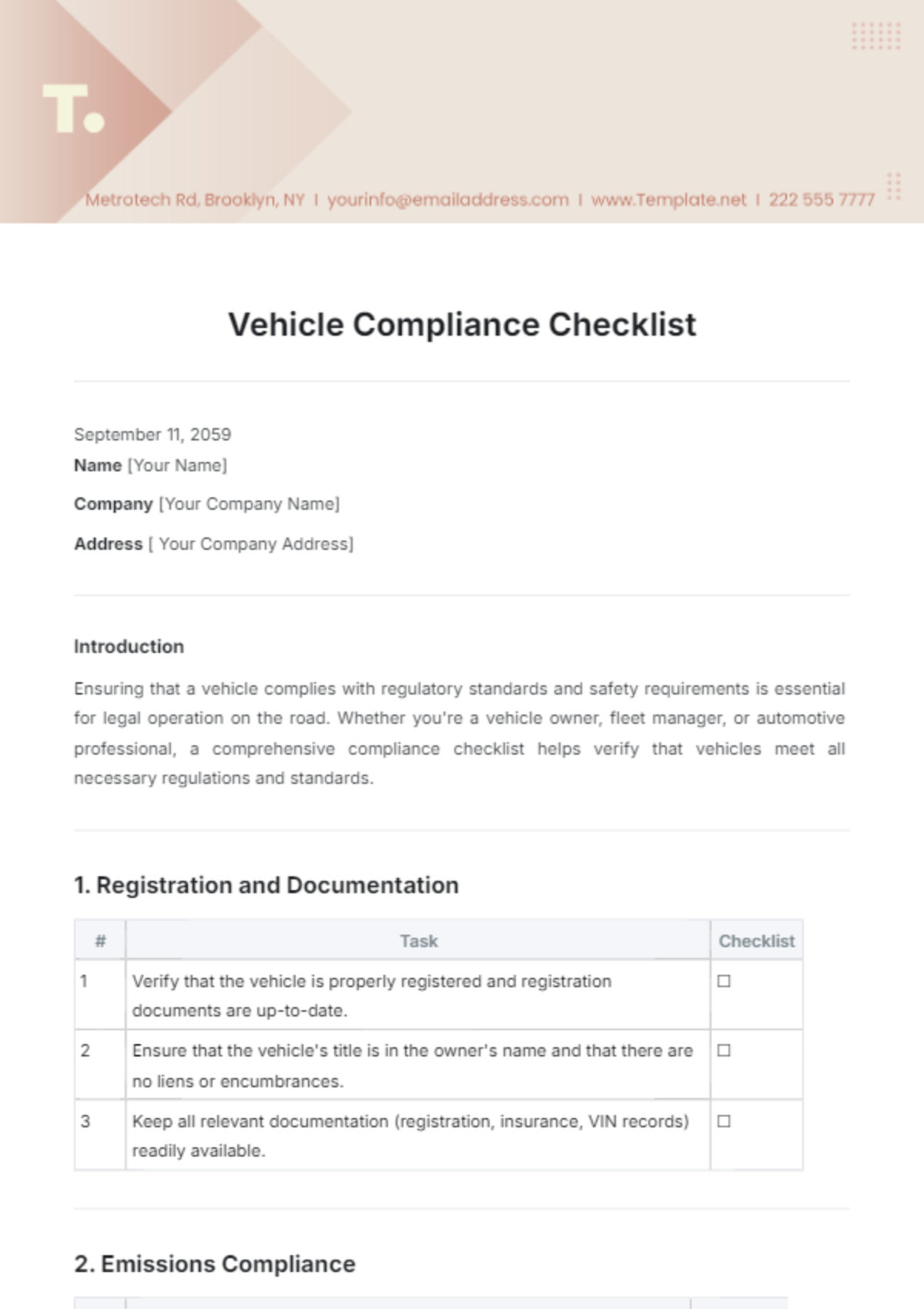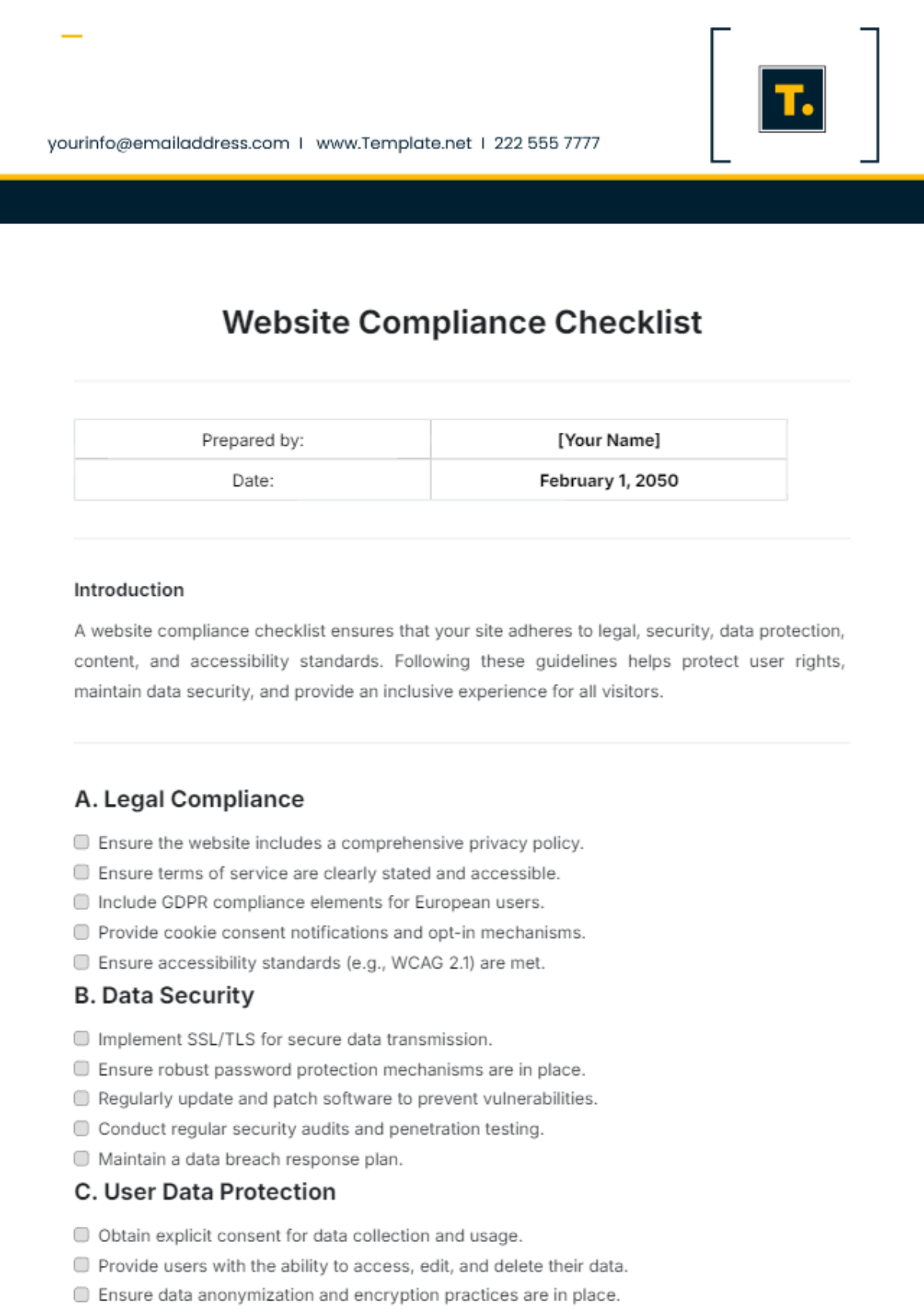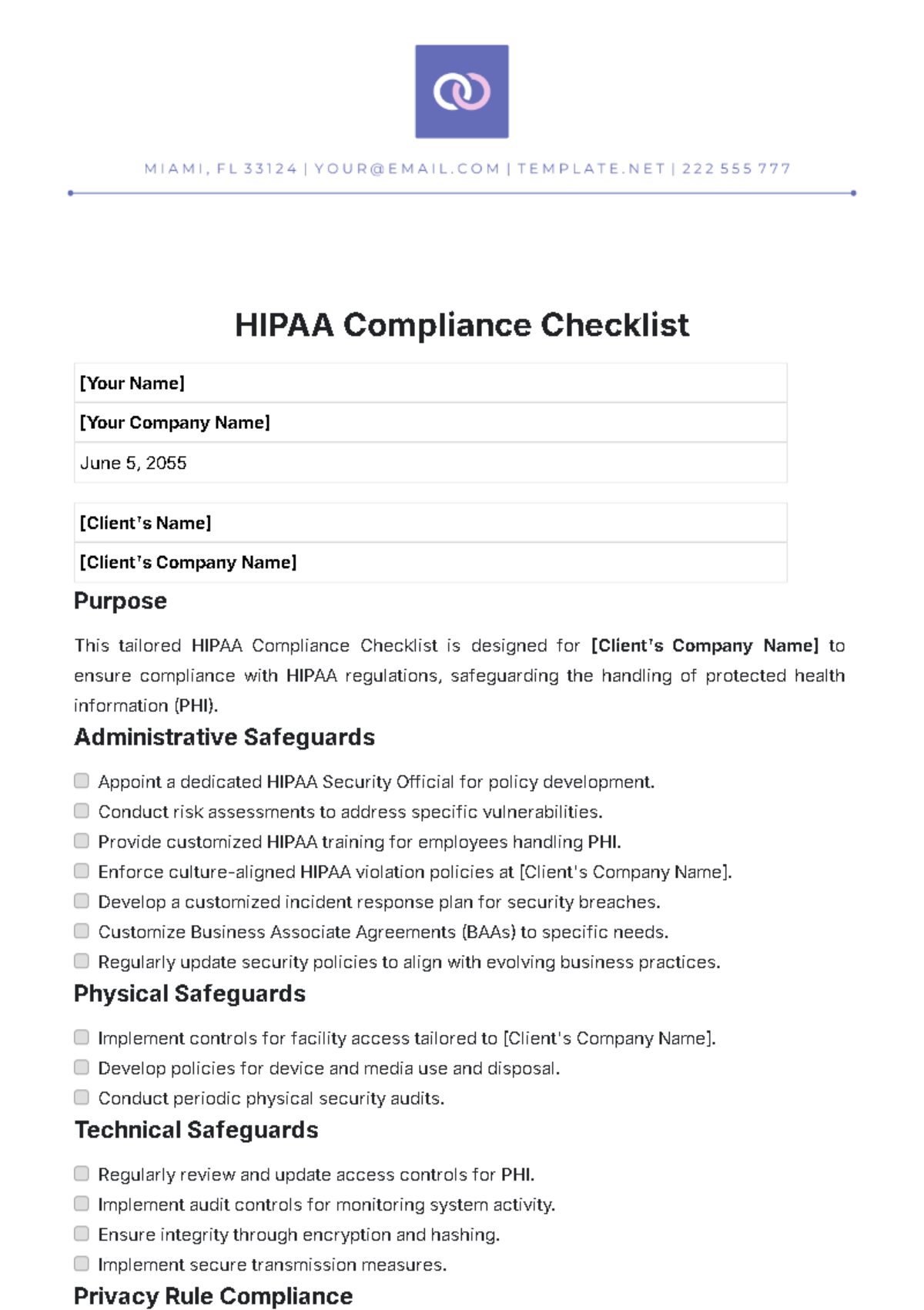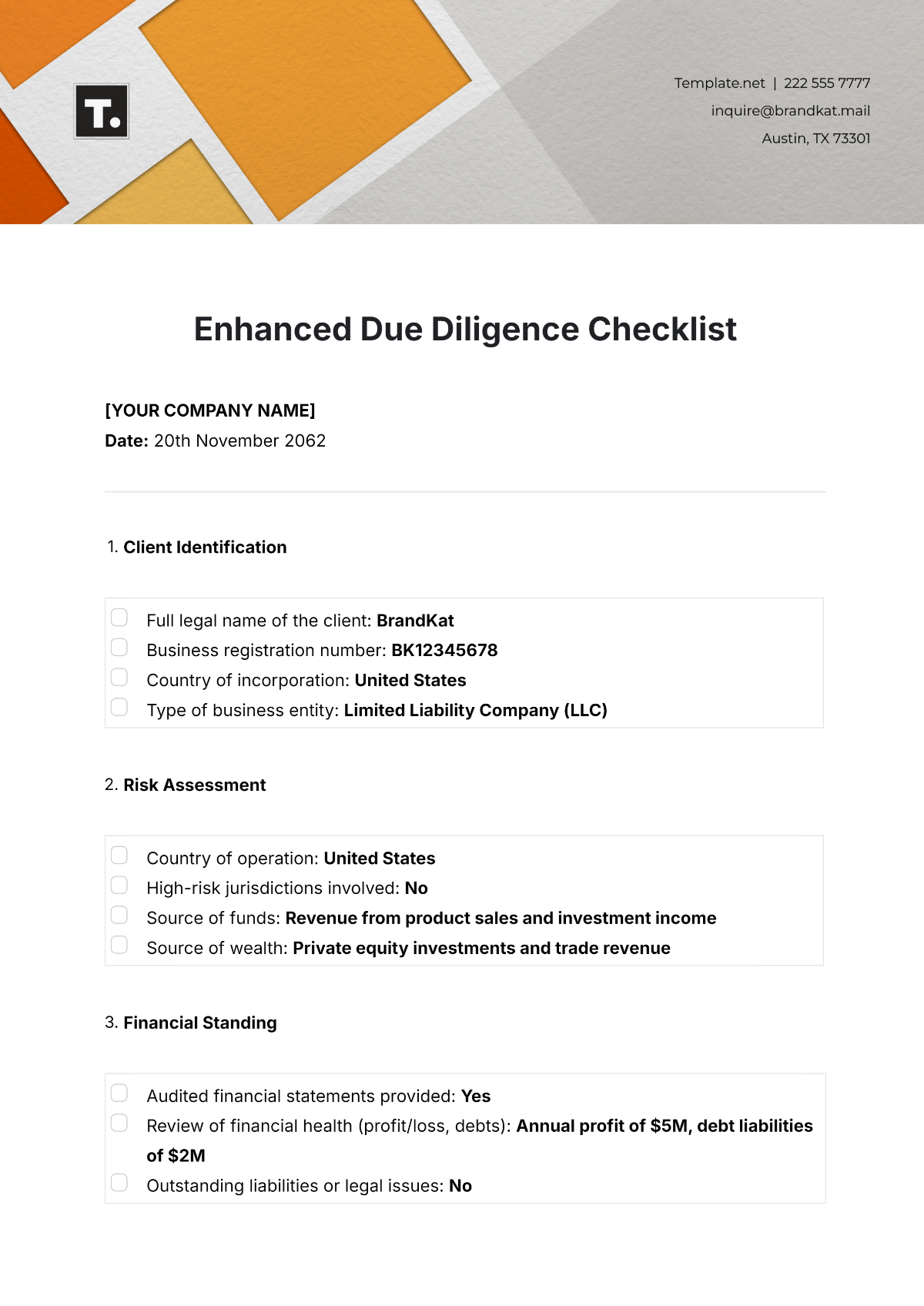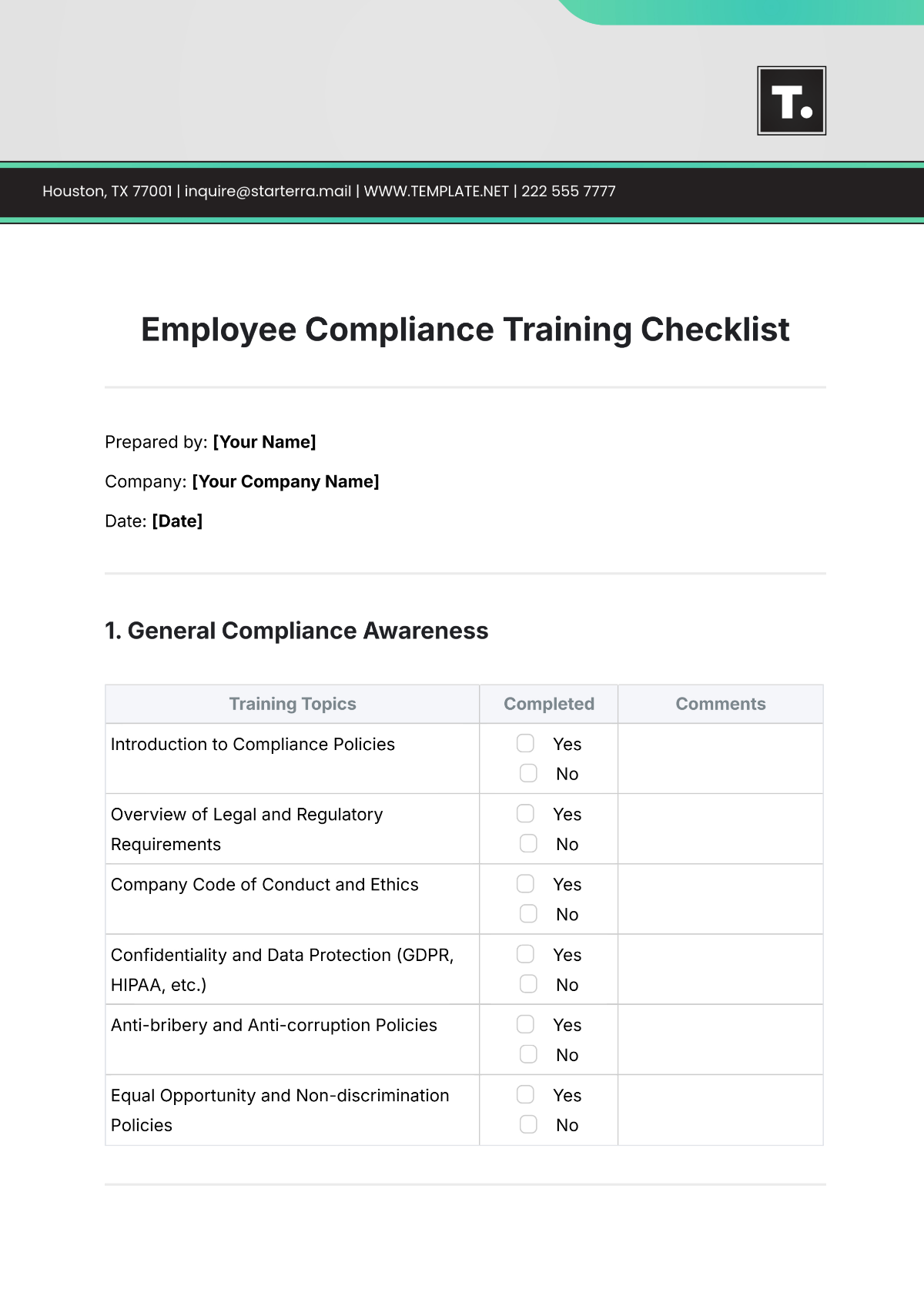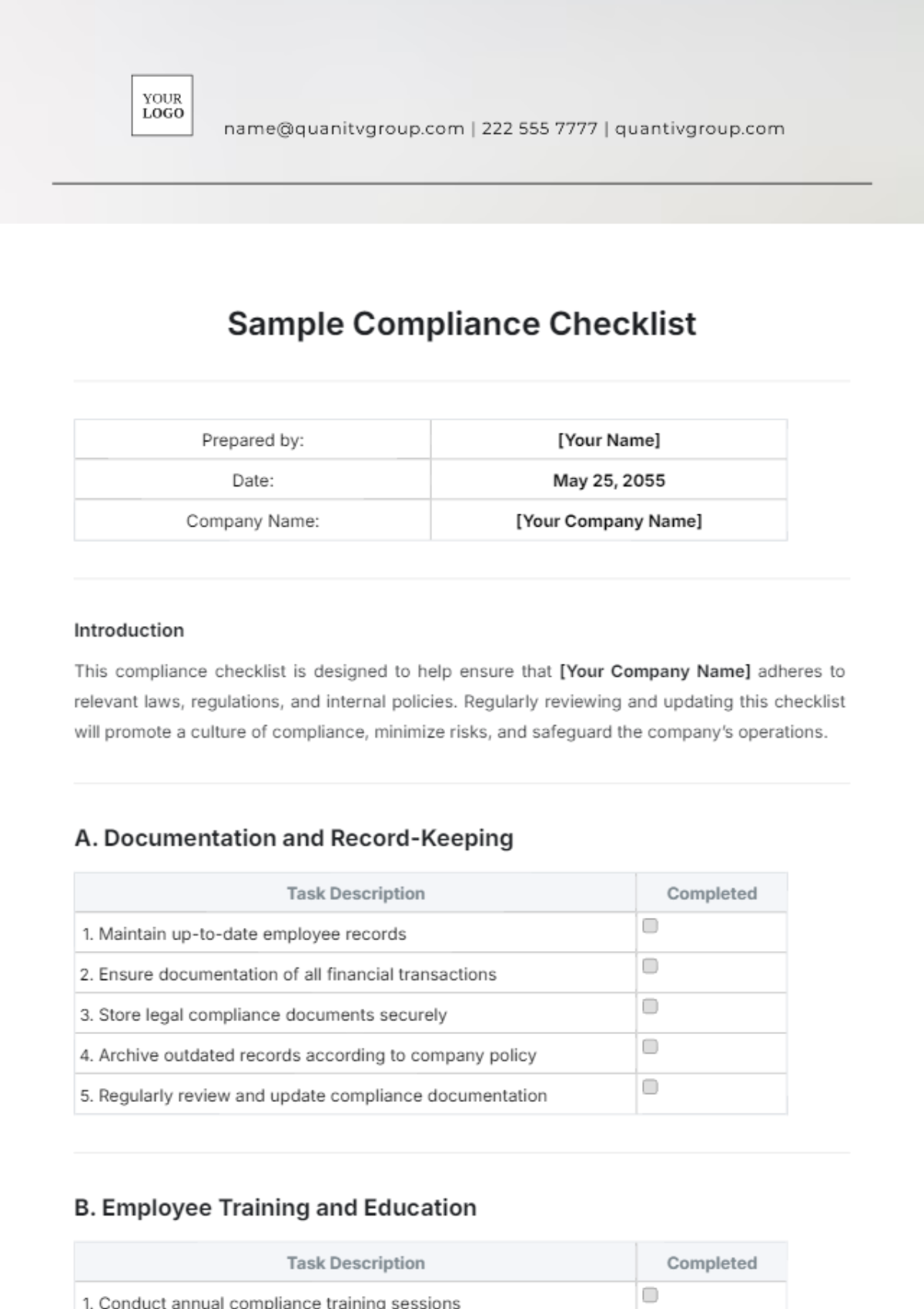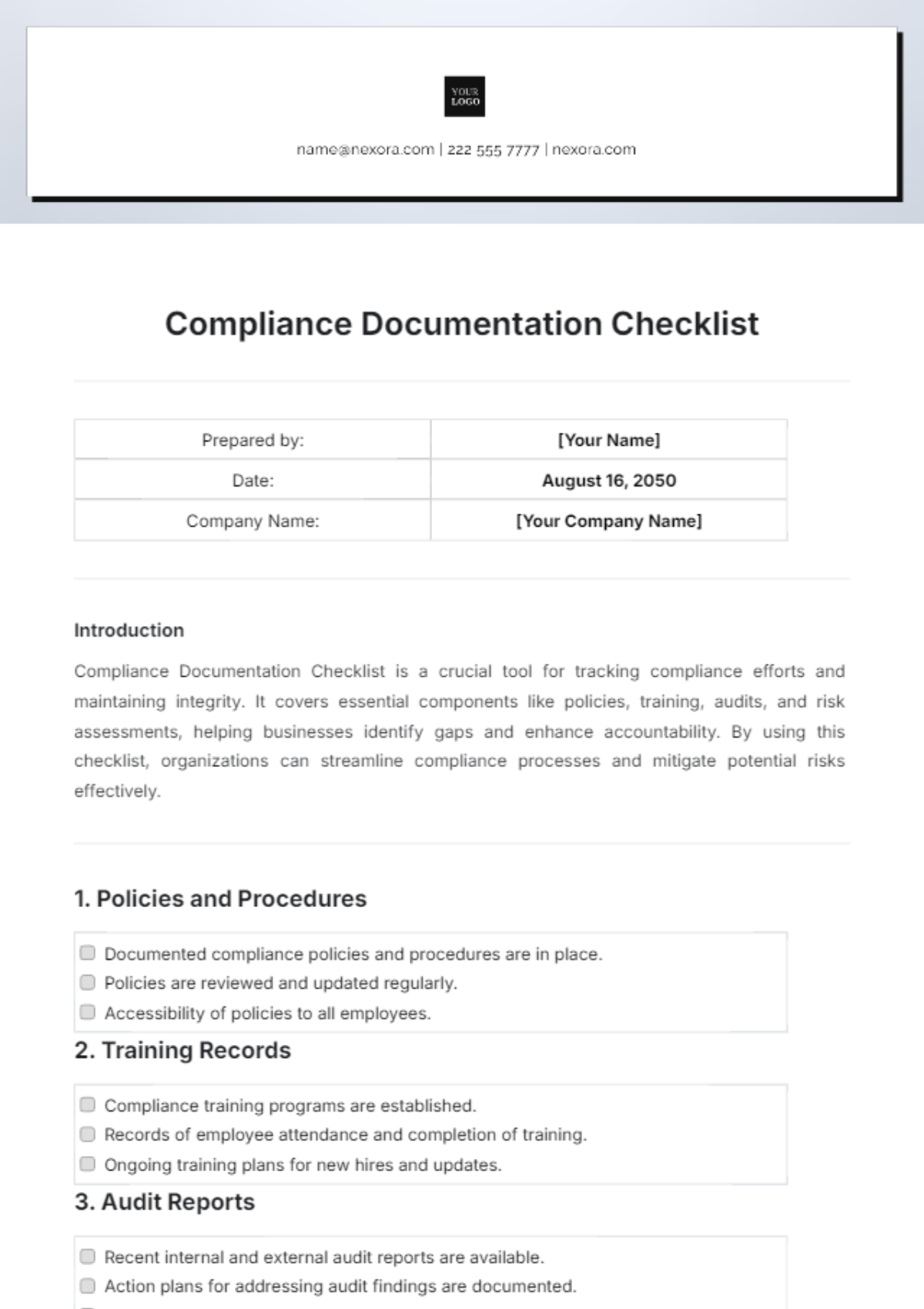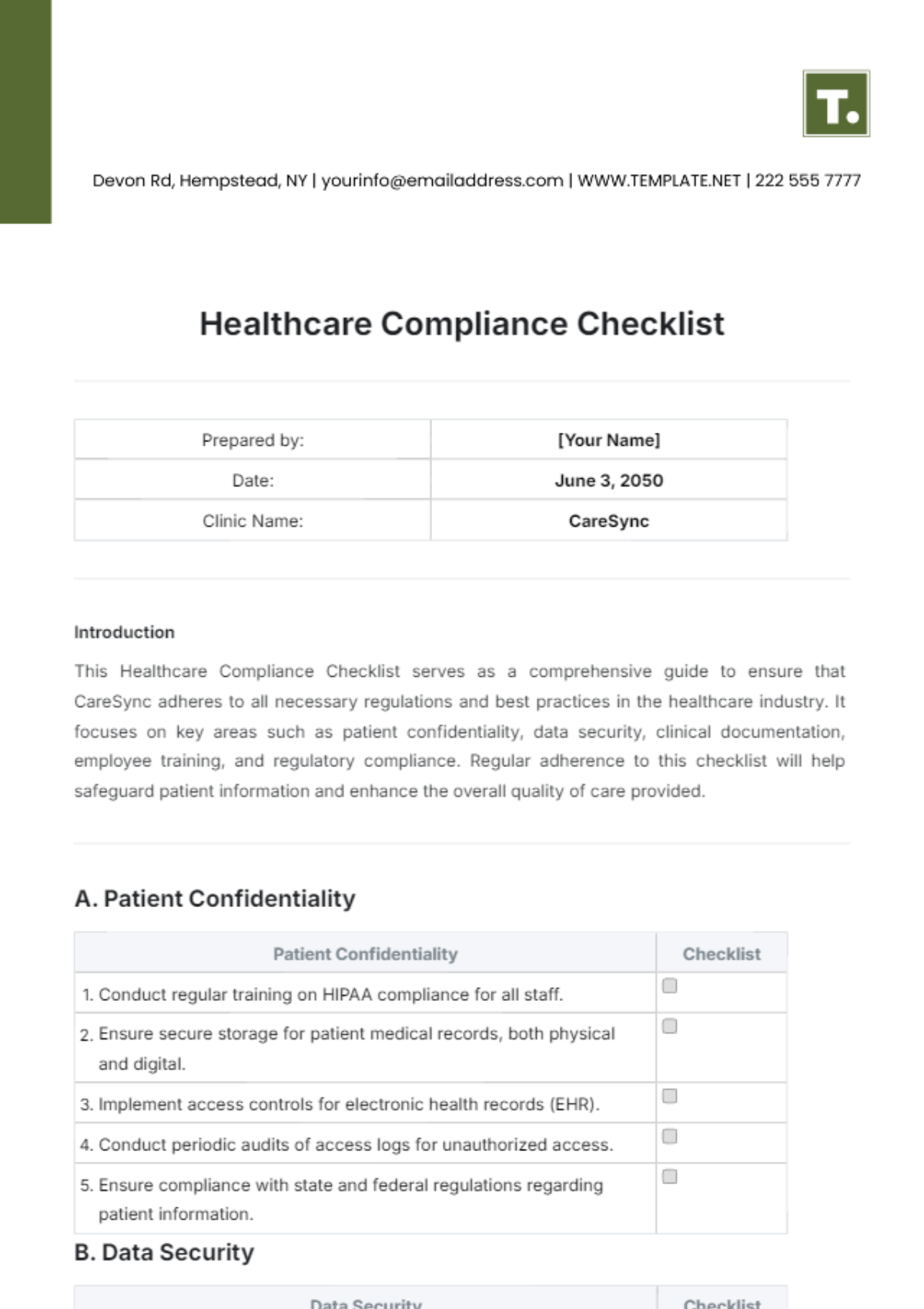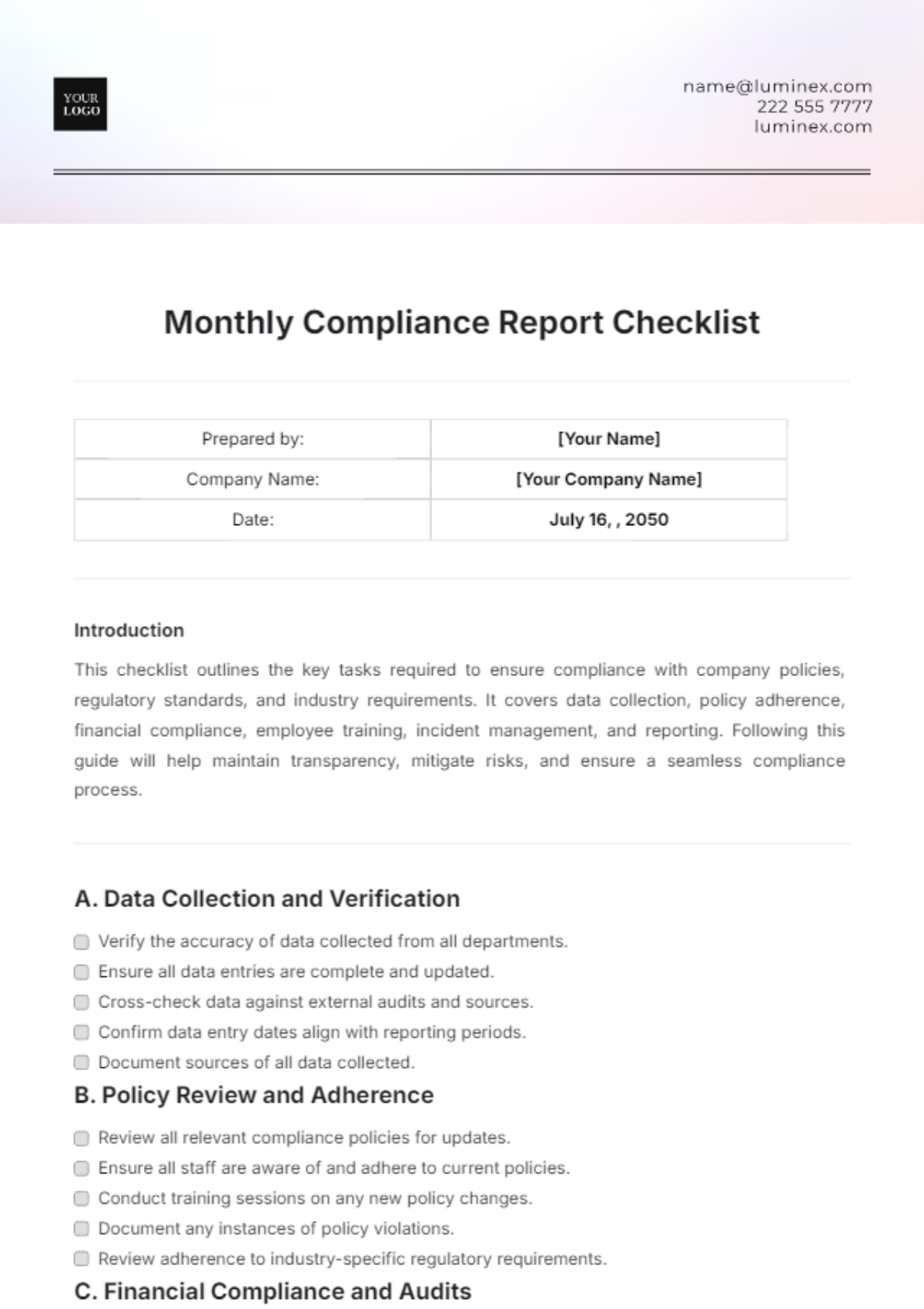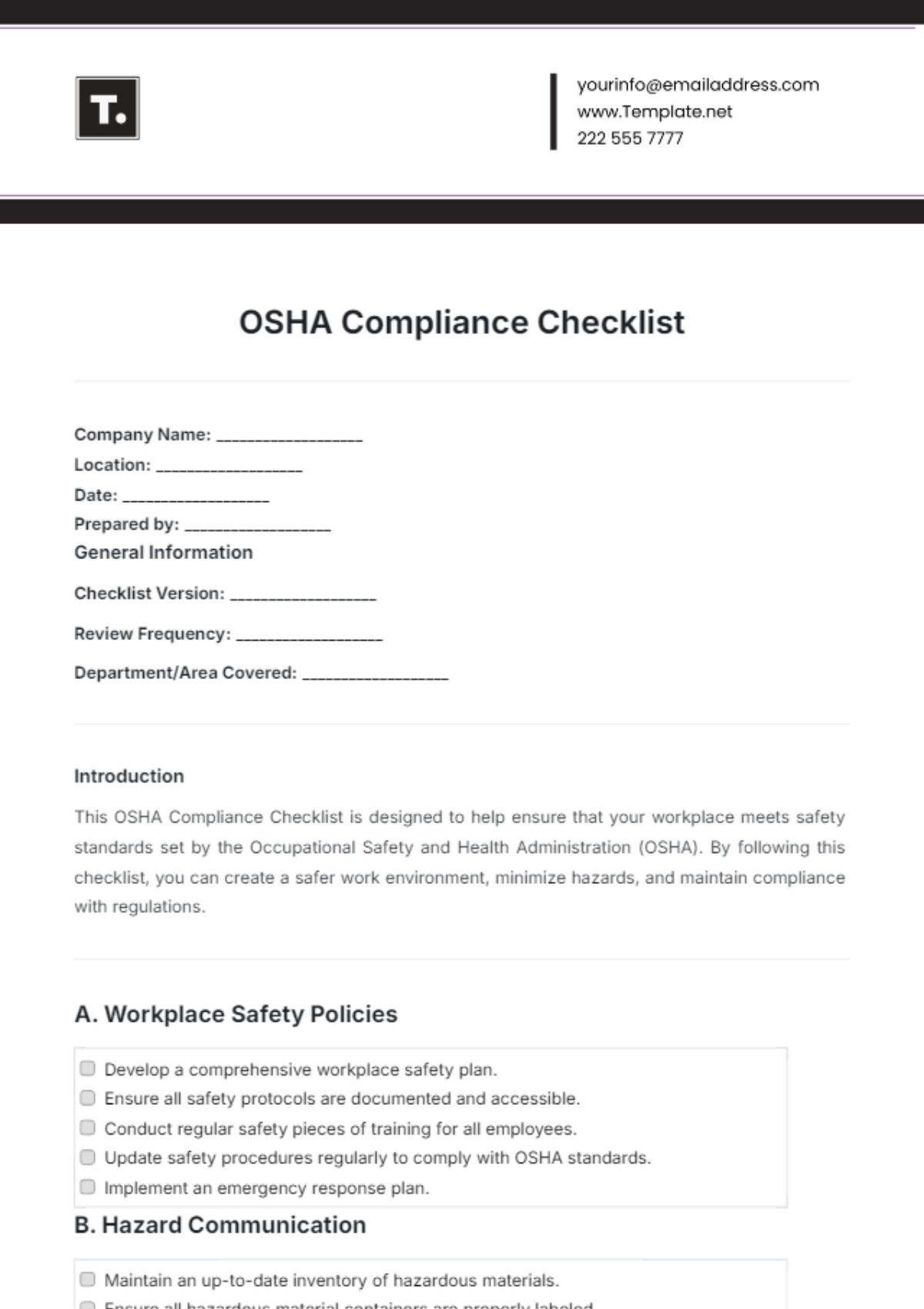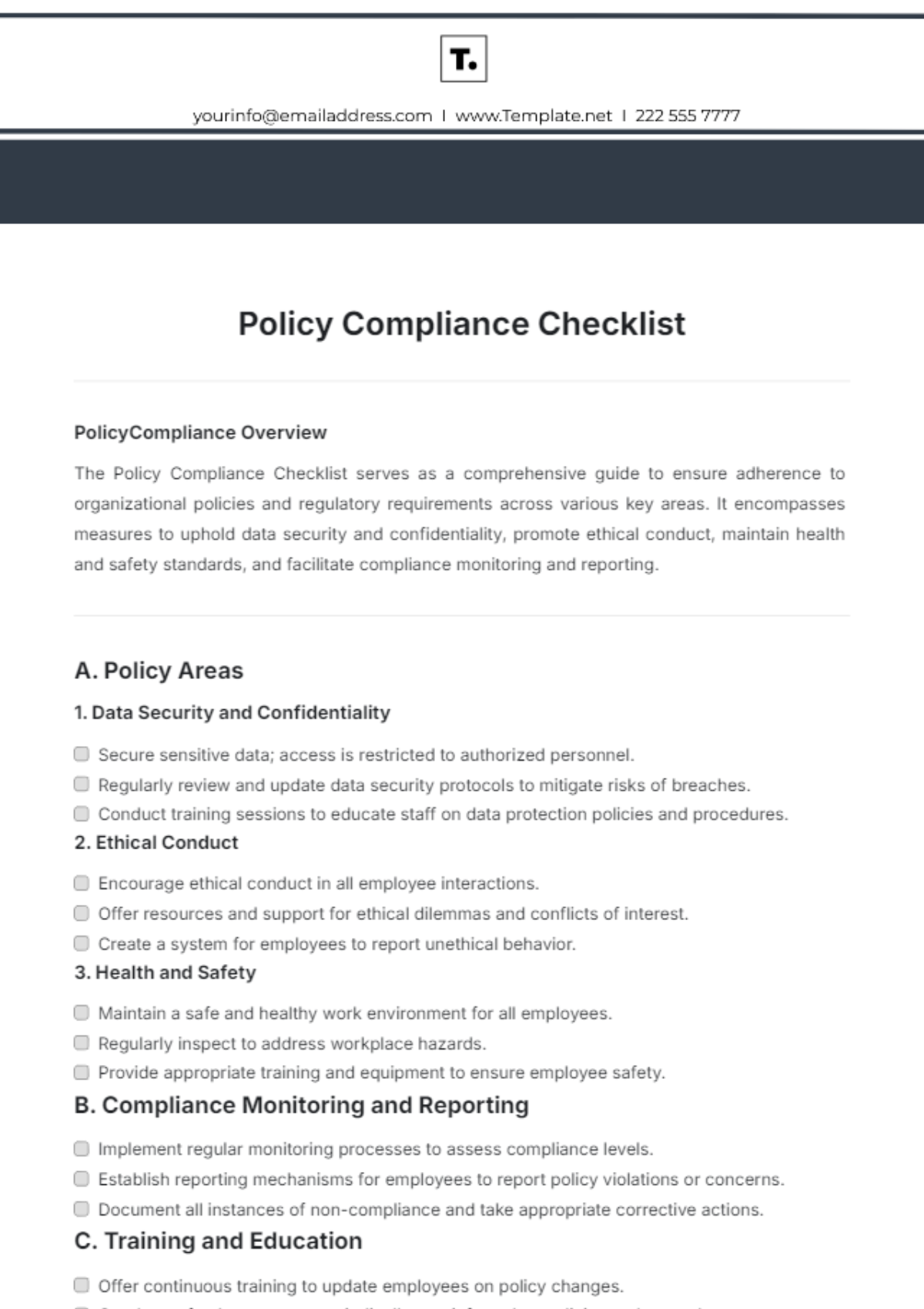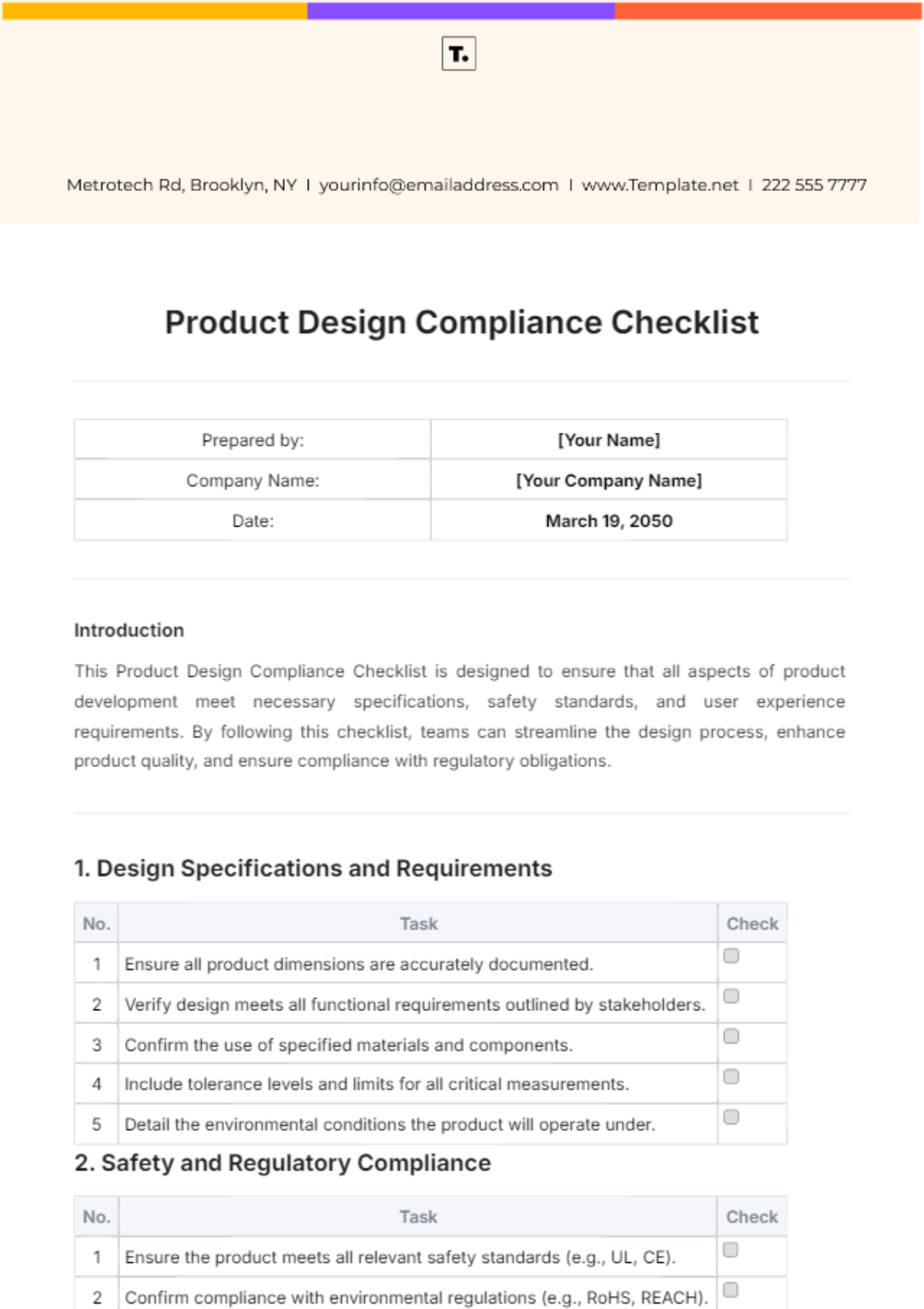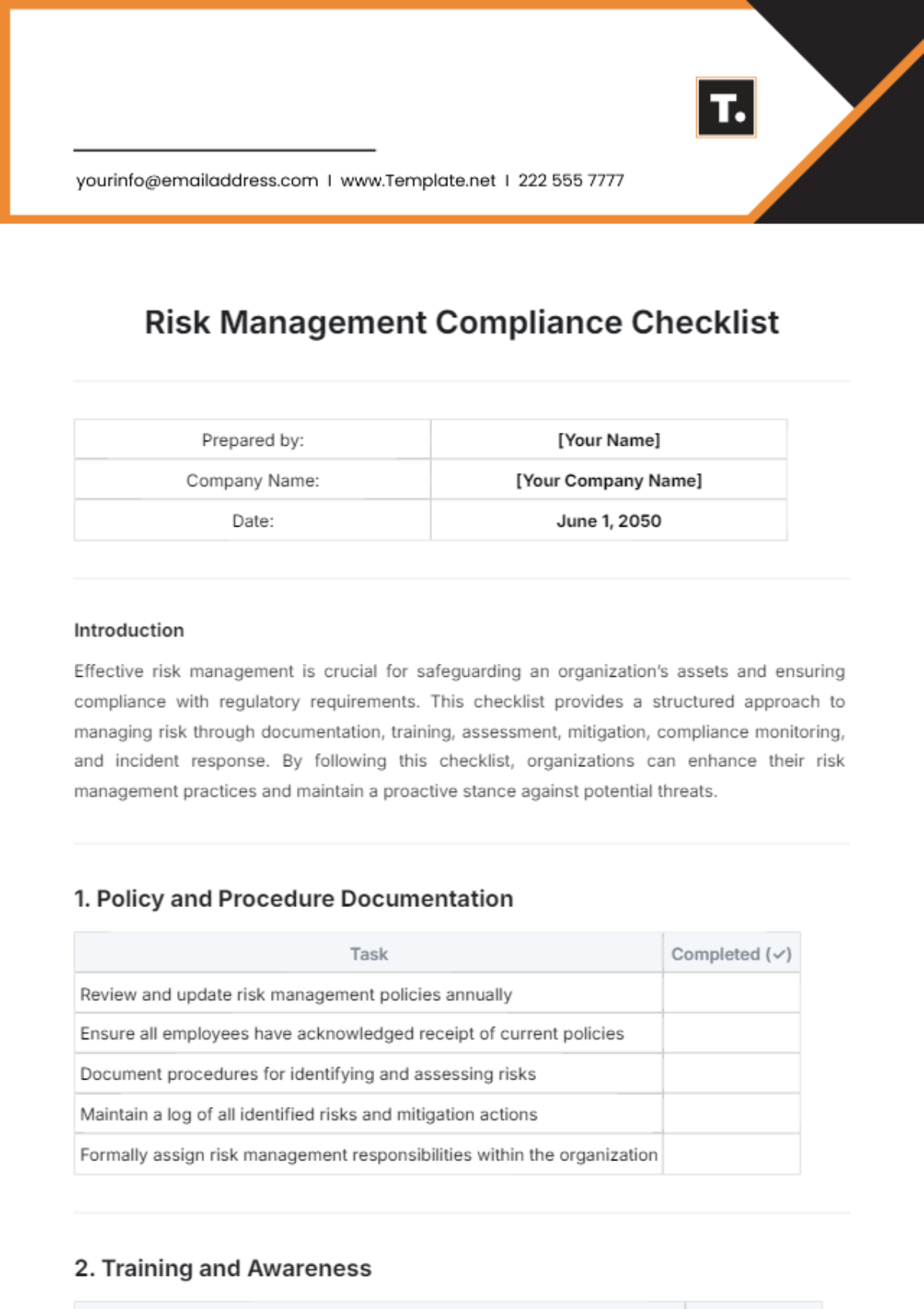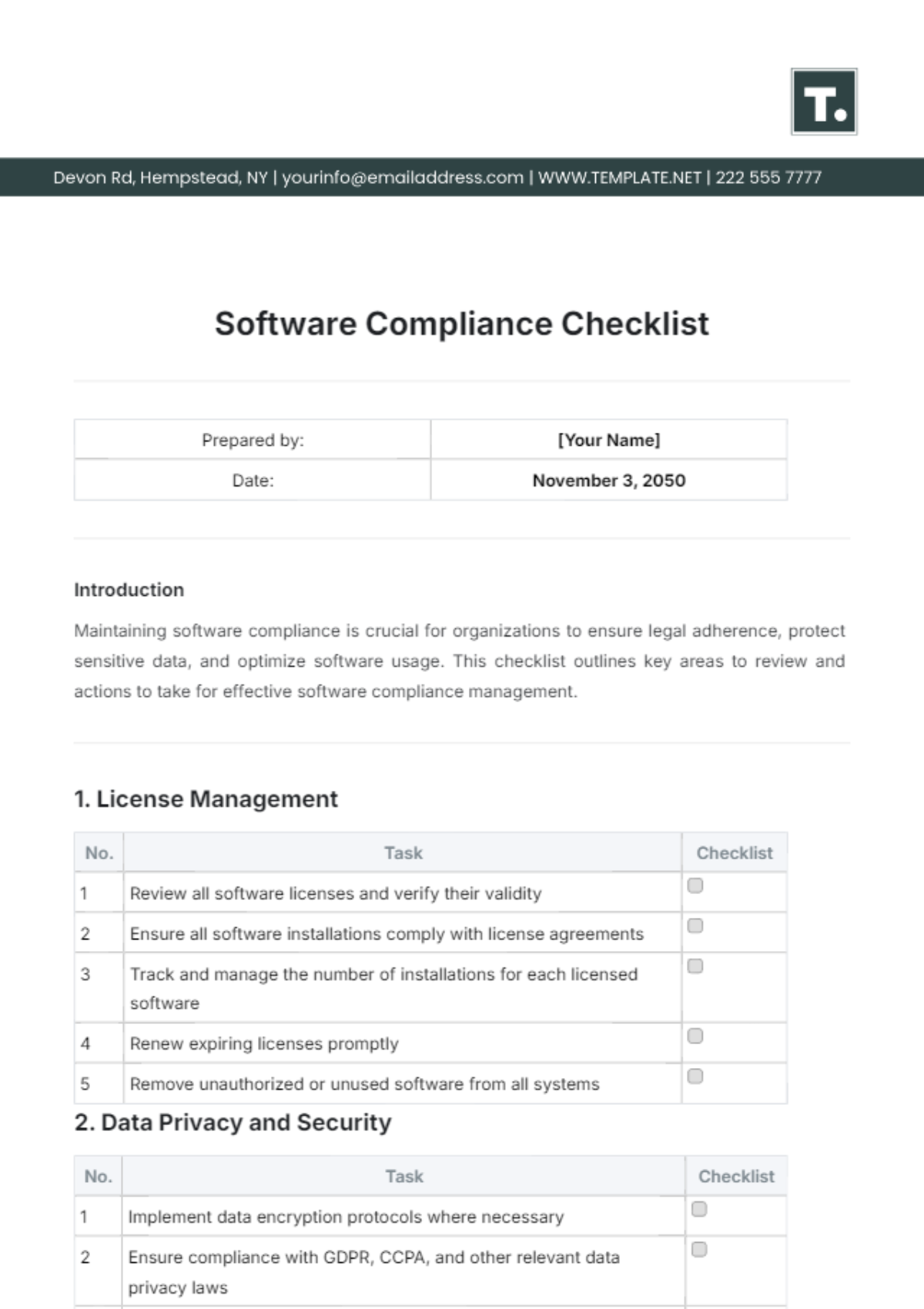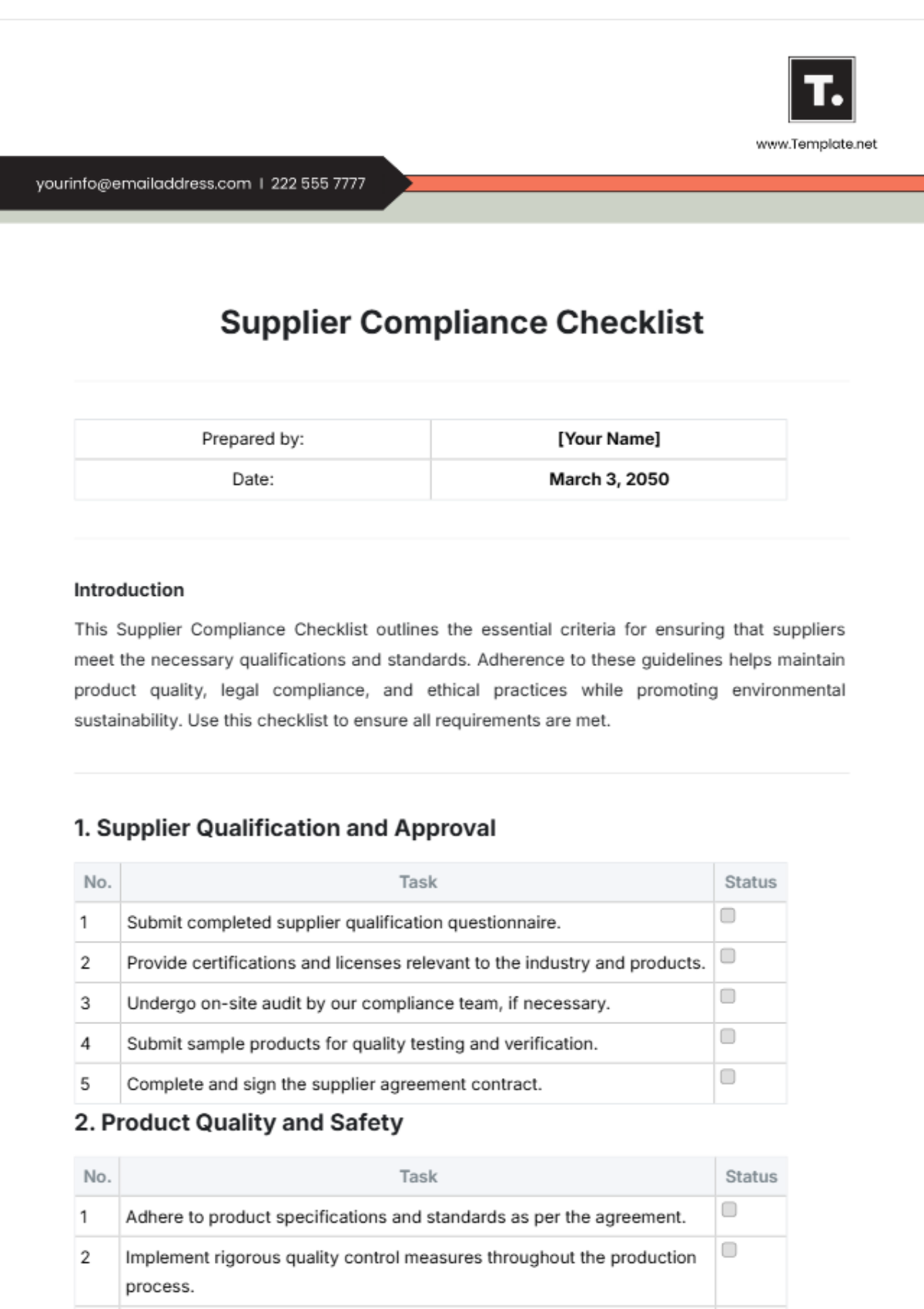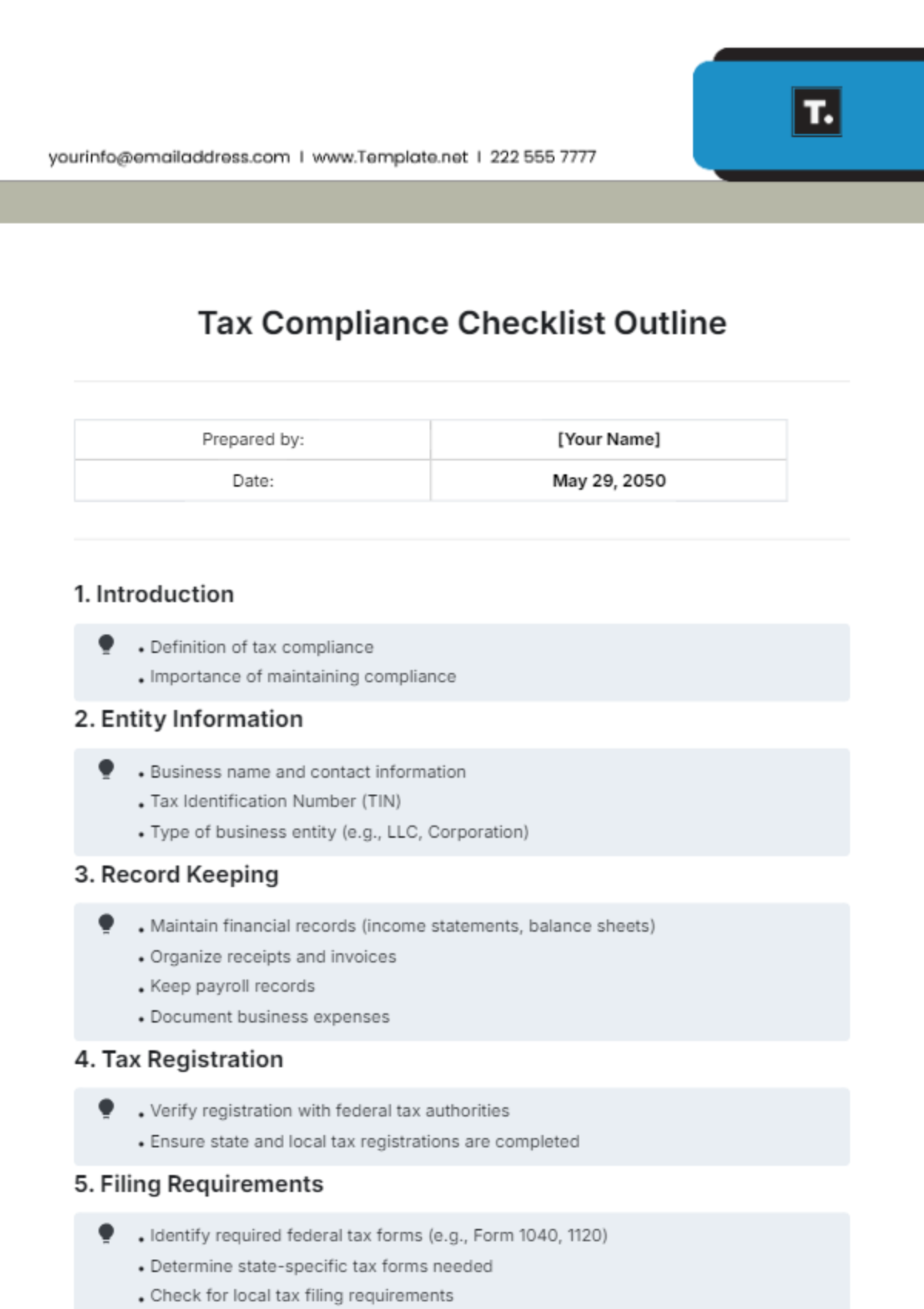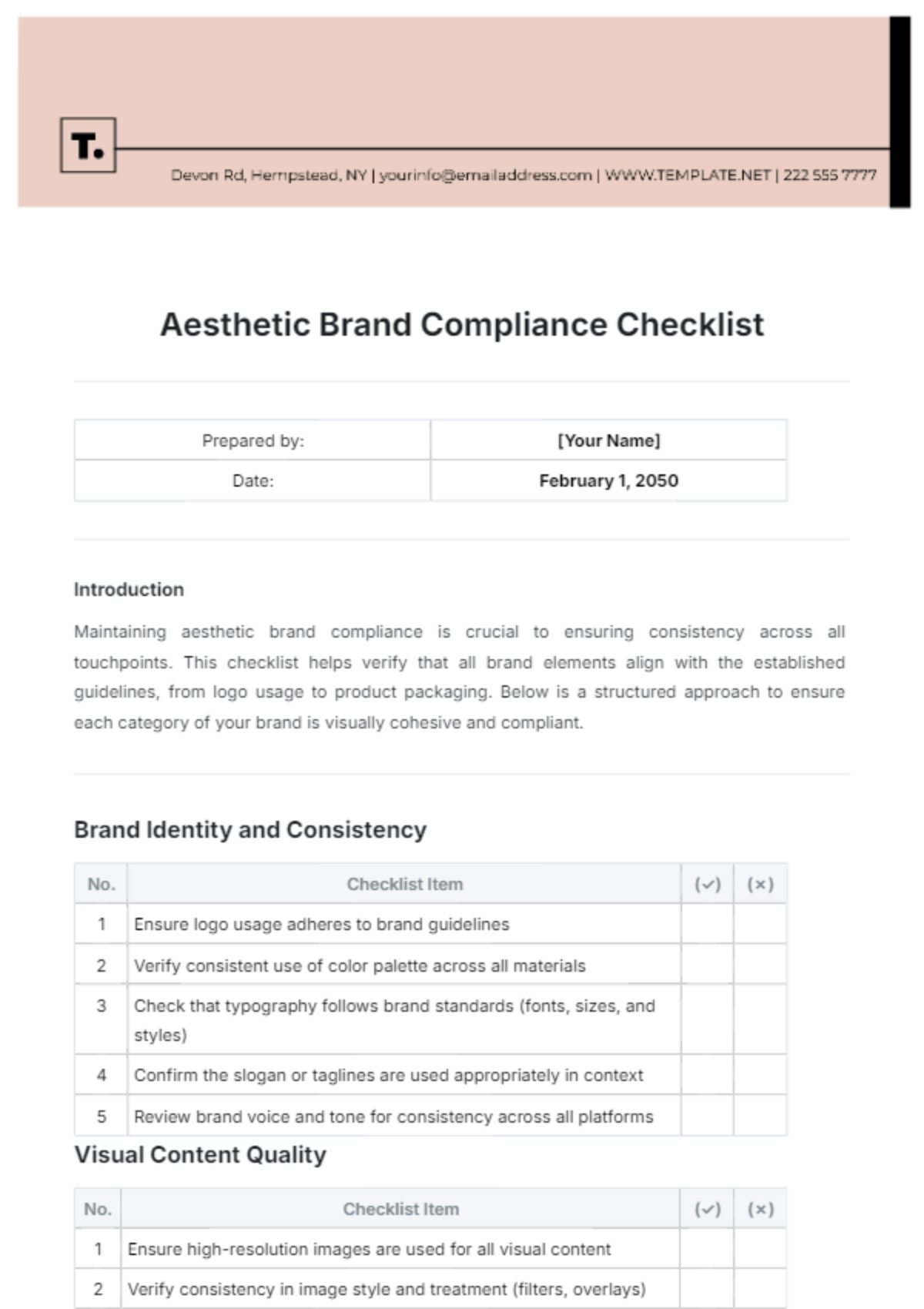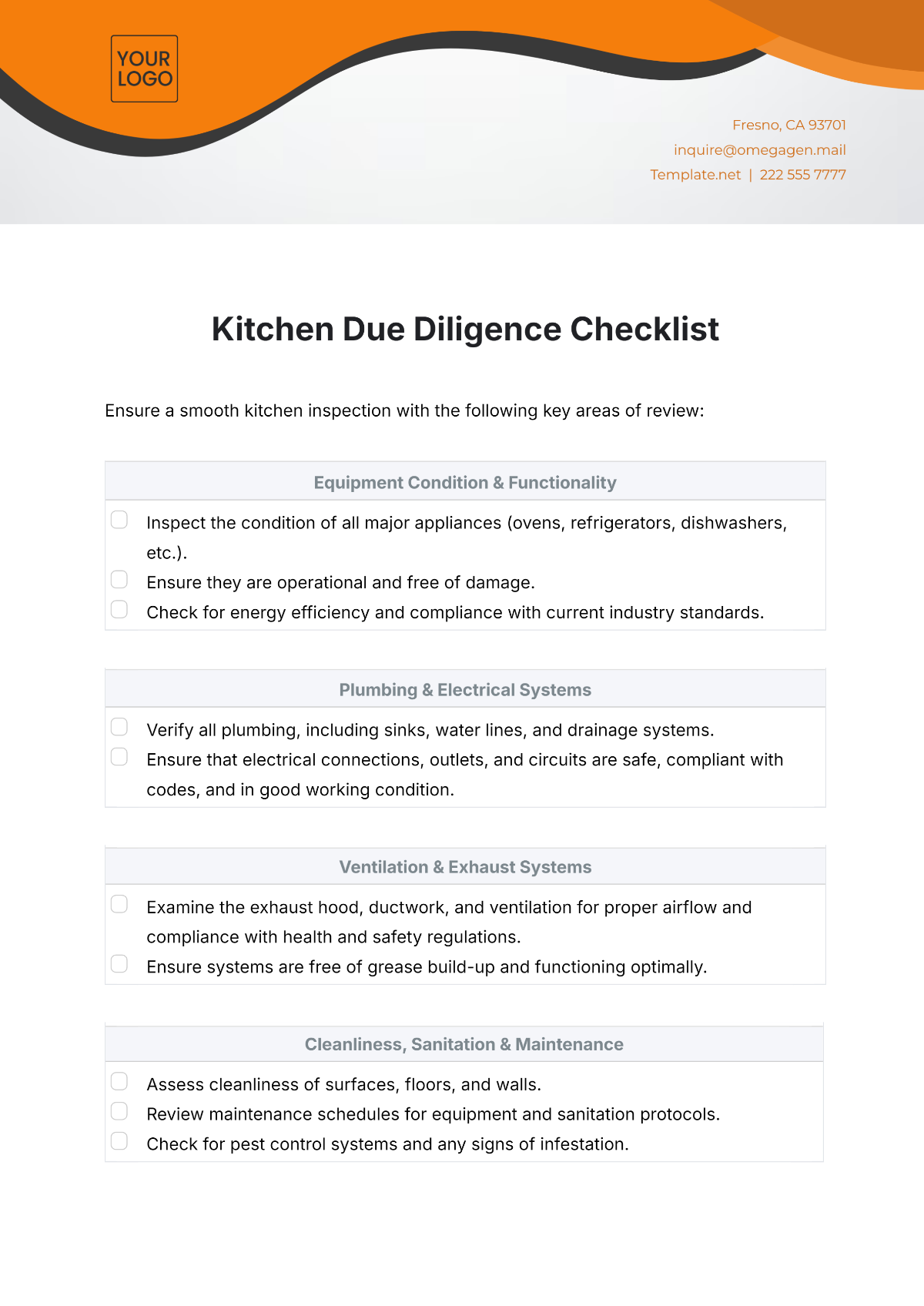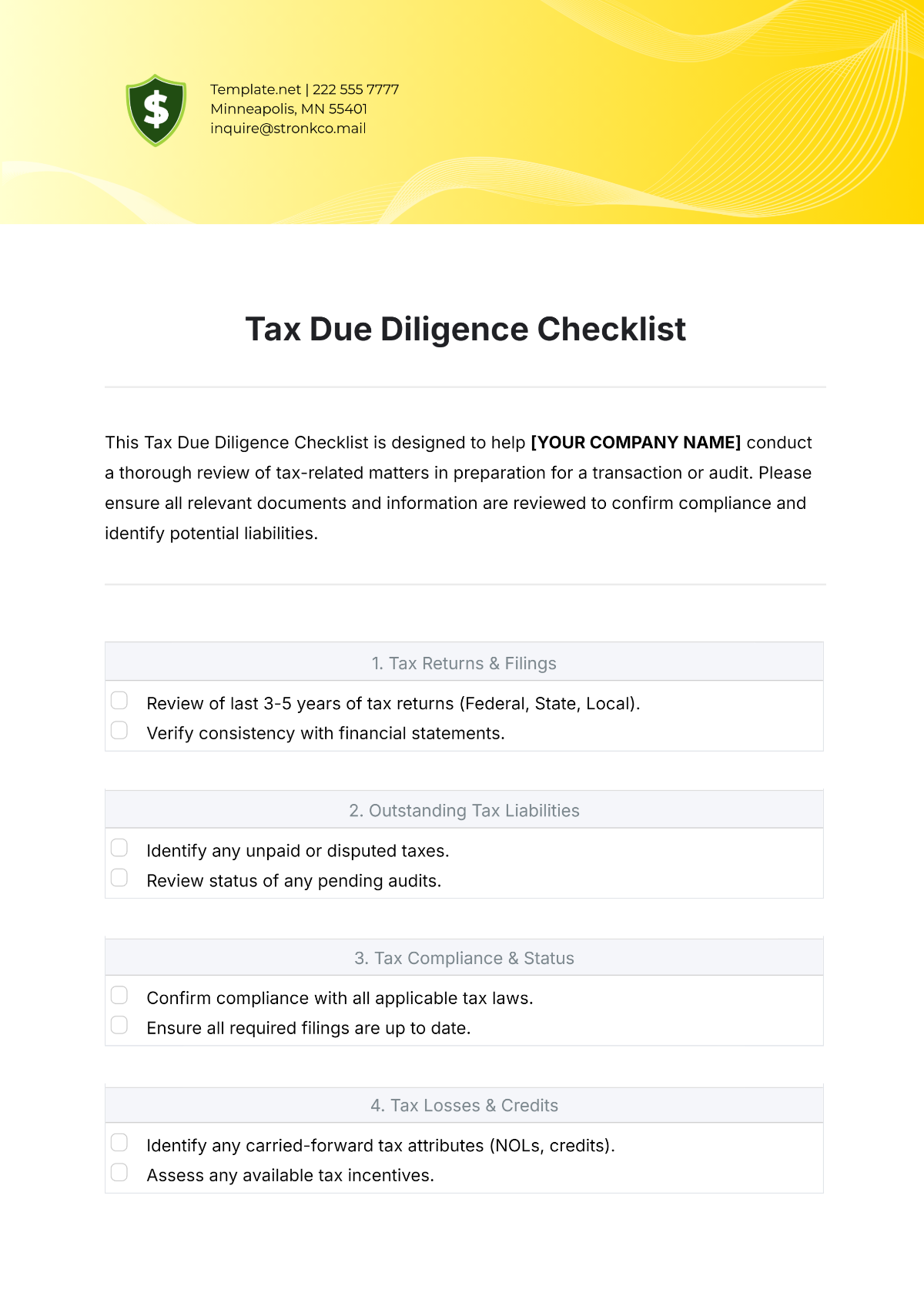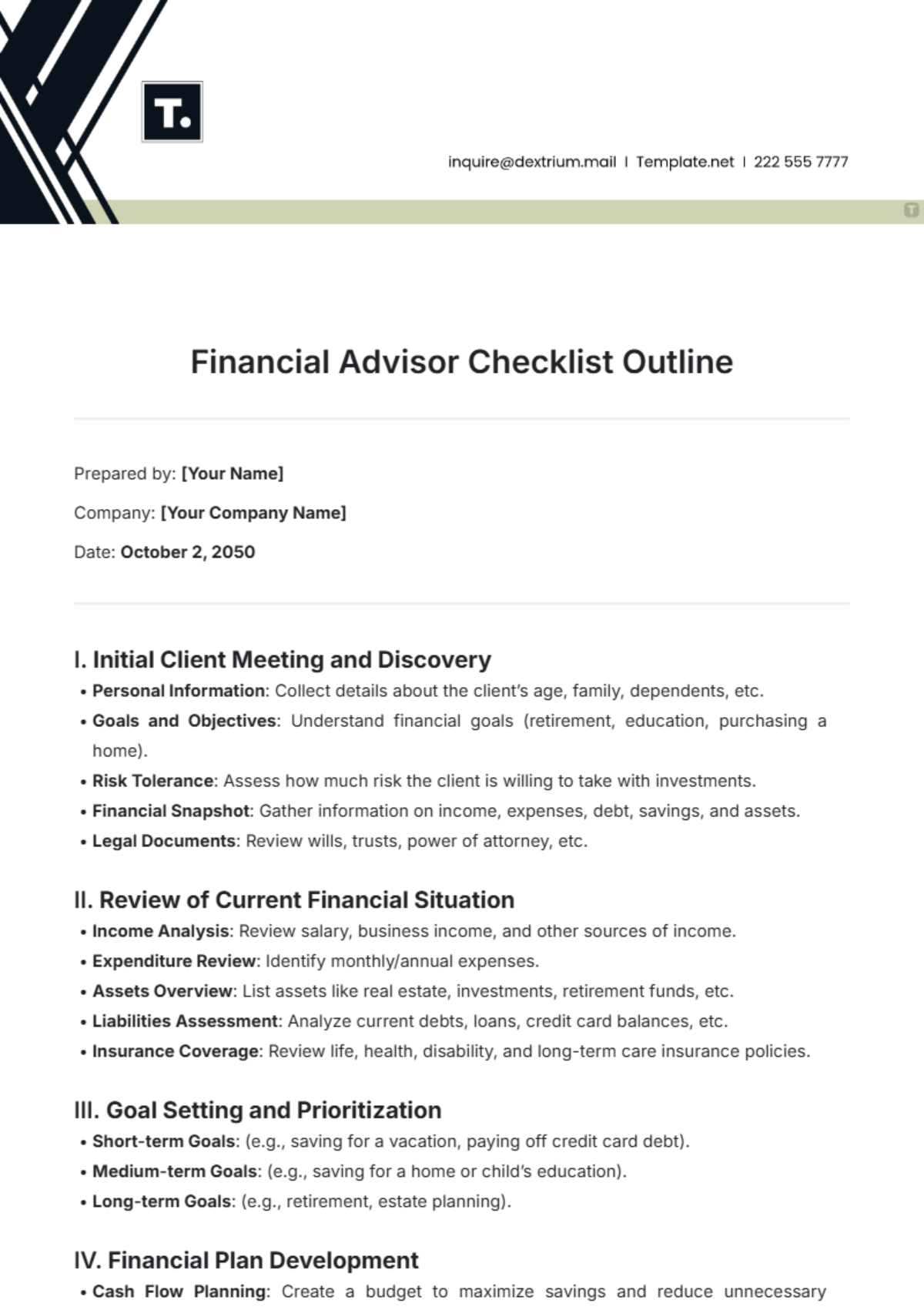Cloud Security Compliance Checklist
1. Compliance Overview
Objective: Ensure that [YOUR COMPANY NAME] adheres to all relevant legal and industry standards regarding cloud security and compliance.
Responsible Party: [YOUR NAME], [YOUR COMPANY ADDRESS]
Date of Last Review: [DATE]
Next Scheduled Review: [DATE]
2. Access Control
1. User Access
User access managed through role-based access control (RBAC).
Strong authentication mechanisms (e.g., multi-factor authentication) enforced.
Regular reviews of user access permissions.
2. Data Encryption
Data encrypted both in transit and at rest.
Encryption protocols compliant with industry standards (e.g., AES-256).
Key management processes in place.
3. Network Security
1. Firewall Configuration
Firewalls configured to restrict unauthorized traffic.
Regular review and update of firewall rules.
Segmentation of network resources based on sensitivity.
2. Intrusion Detection and Prevention
IDS/IPS systems deployed to detect and prevent suspicious activities.
Regular monitoring and analysis of network traffic.
Incident response procedures defined and tested.
4. Incident Response
1. Incident Detection
Mechanisms in place to detect security incidents promptly.
Monitoring tools and techniques utilized for early detection.
Incident detection thresholds defined and monitored.
2. Incident Response Plan
Formal incident response plan documented and maintained.
Clearly defined roles and responsibilities for incident response team members.
Regular testing and updating of the incident response plan.
3. Containment and Mitigation
Immediate containment actions defined and practiced.
Procedures in place to mitigate the impact of security incidents.
Rapid response to isolate affected systems and data.
4. Forensic Analysis
Procedures for collecting and preserving evidence during an incident.
Forensic analysis tools and techniques utilized for investigation.
Documentation of findings and lessons learned for future improvements.
5. Data Protection
1. Data Backup
Regular backups of critical data performed.
Backup data stored securely, with off-site copies.
Backup integrity verified through regular testing.
2. Data Retention
Policies in place for data retention and deletion.
Compliance with relevant data protection regulations (e.g., GDPR, CCPA).
Procedures for secure disposal of data assets.
6. Compliance and Audit
1. Regulatory Compliance
Compliance with industry standards and regulations (e.g., ISO 27001, SOC 2).
Regular audits conducted to assess compliance.
Remediation plans developed for identified non-compliance.
2. Documentation
Cloud security policies and procedures documented and accessible.
Records of security incidents and resolutions maintained.
Documentation updated to reflect changes in cloud environment.
7. Disaster Recovery and Business Continuity
1. Disaster Recovery Plan
Plan for restoring services in case of a disaster or outage.
Regular testing of disaster recovery procedures.
Clearly defined roles and responsibilities during a disaster.
2. Business Continuity
Continuity plans developed for critical business functions.
Redundant systems and failover mechanisms in place.
Regular reviews and updates of continuity plans.
8. Personnel Training and Awareness
Security Training
Regular security awareness training for employees.
Training on cloud security best practices and policies.
Awareness of social engineering and phishing threats.
9. Signature
By signing below, you acknowledge that you have reviewed and understand the contents of this Cloud Security Compliance Checklist.

[YOUR NAME]
[YOUR COMPANY NAME]
Date:[DATE]
